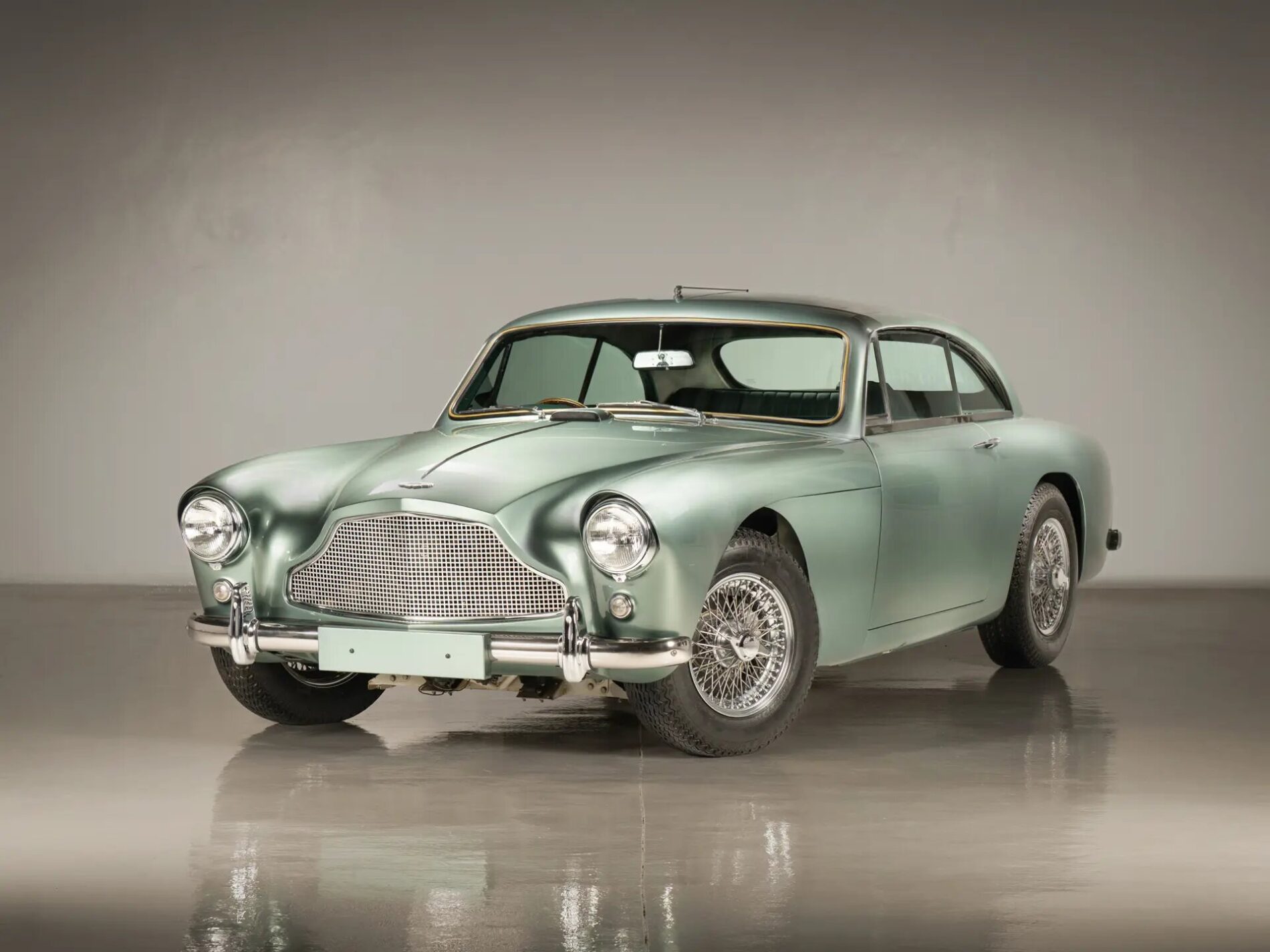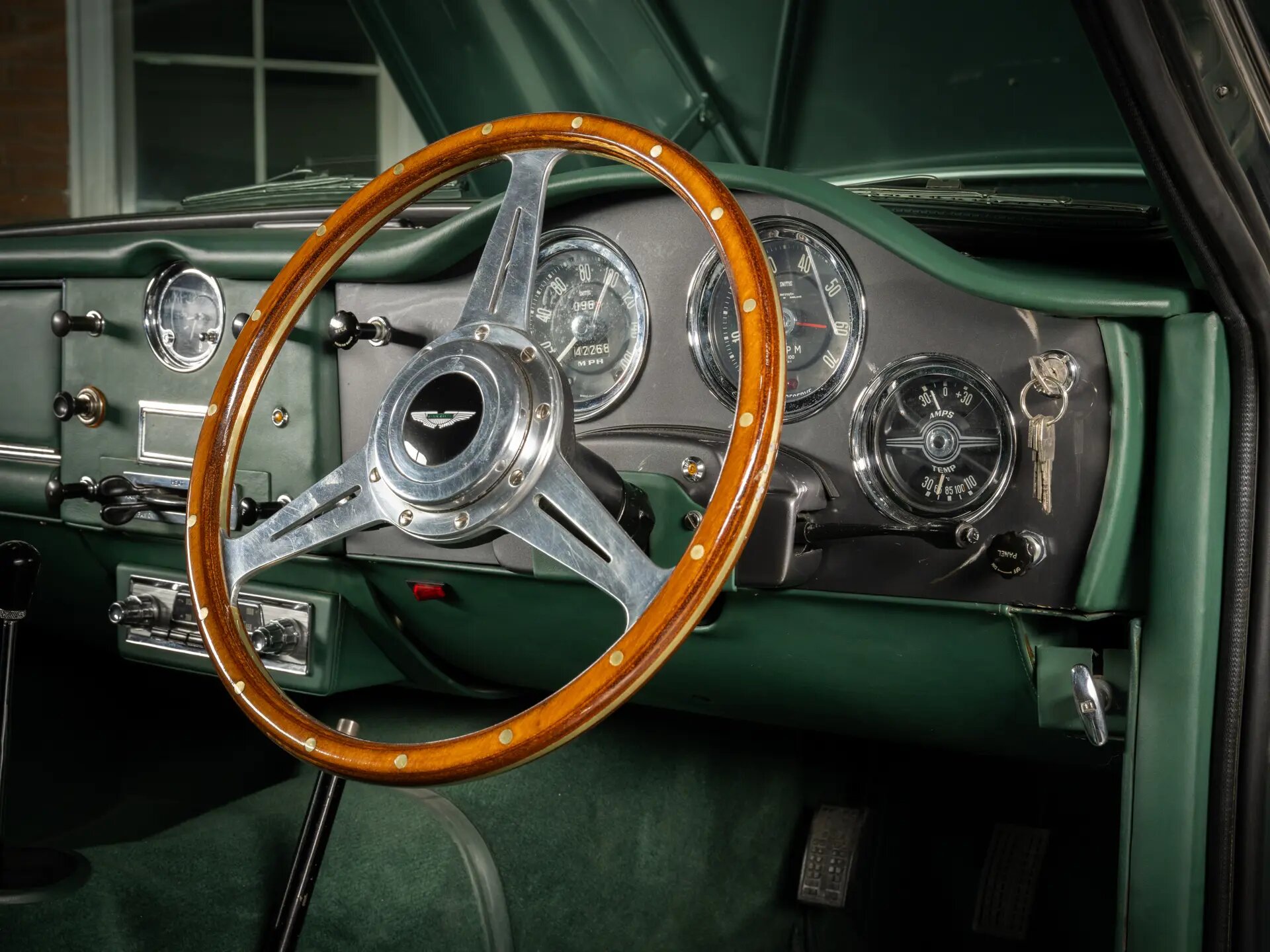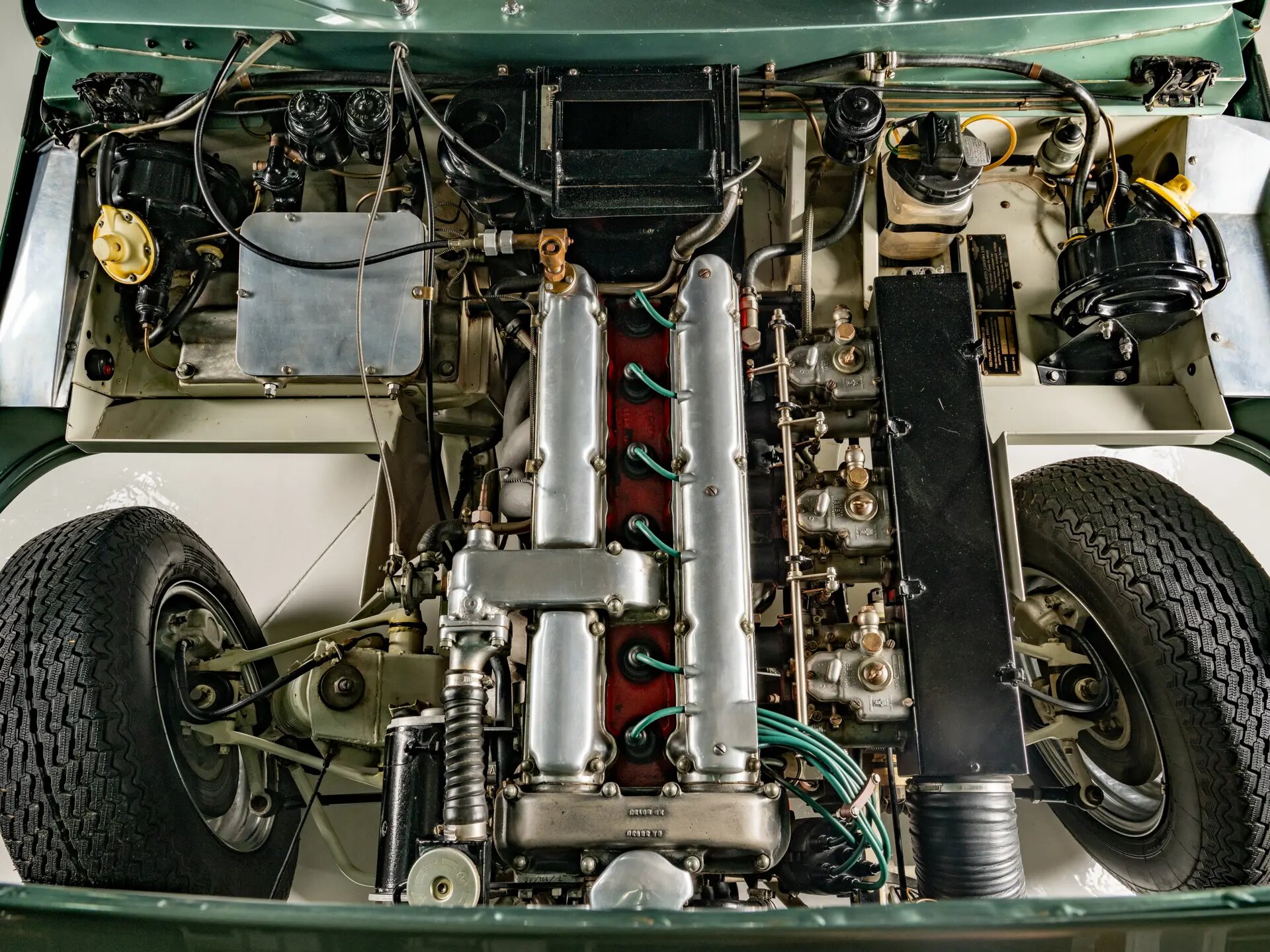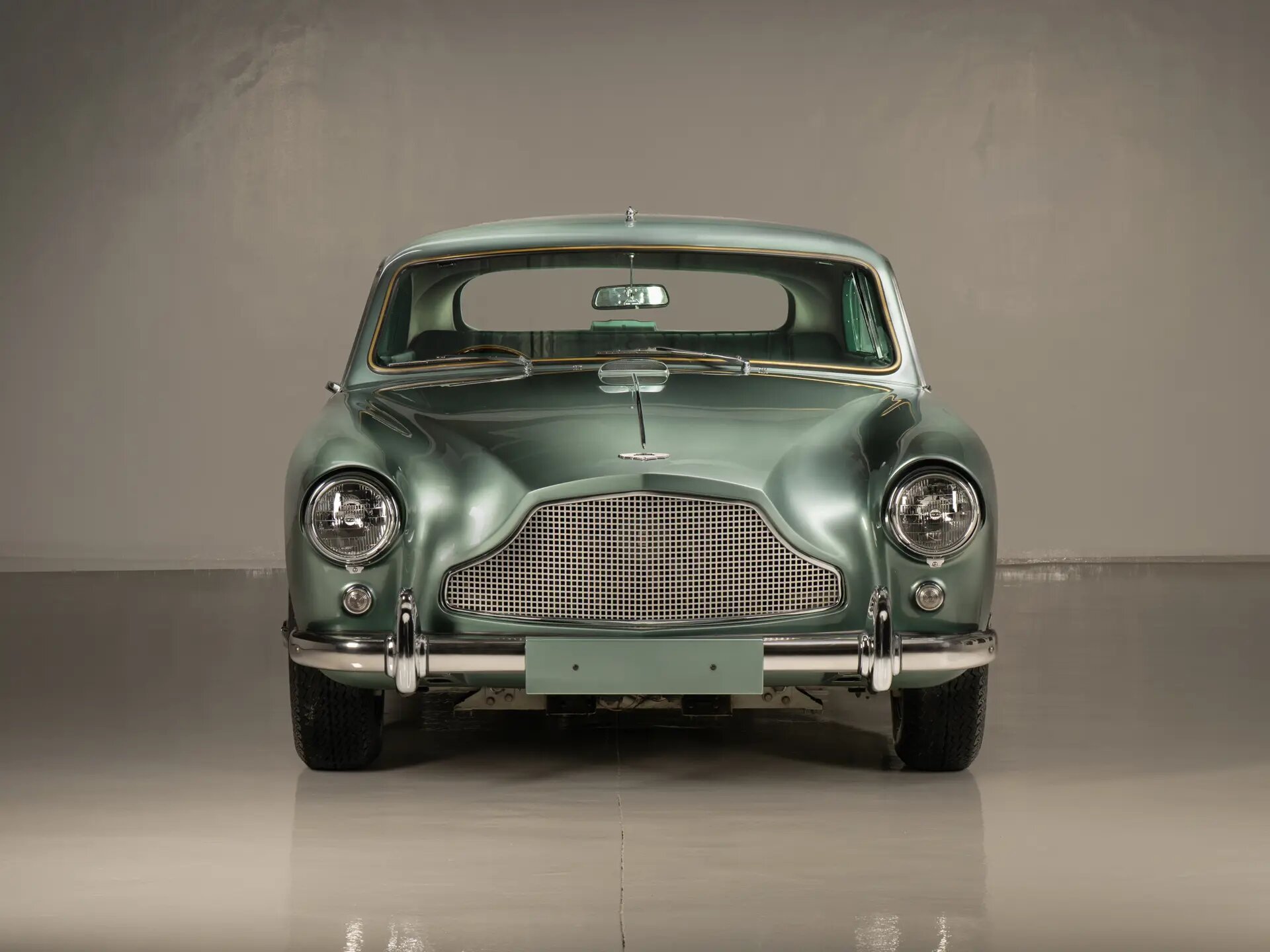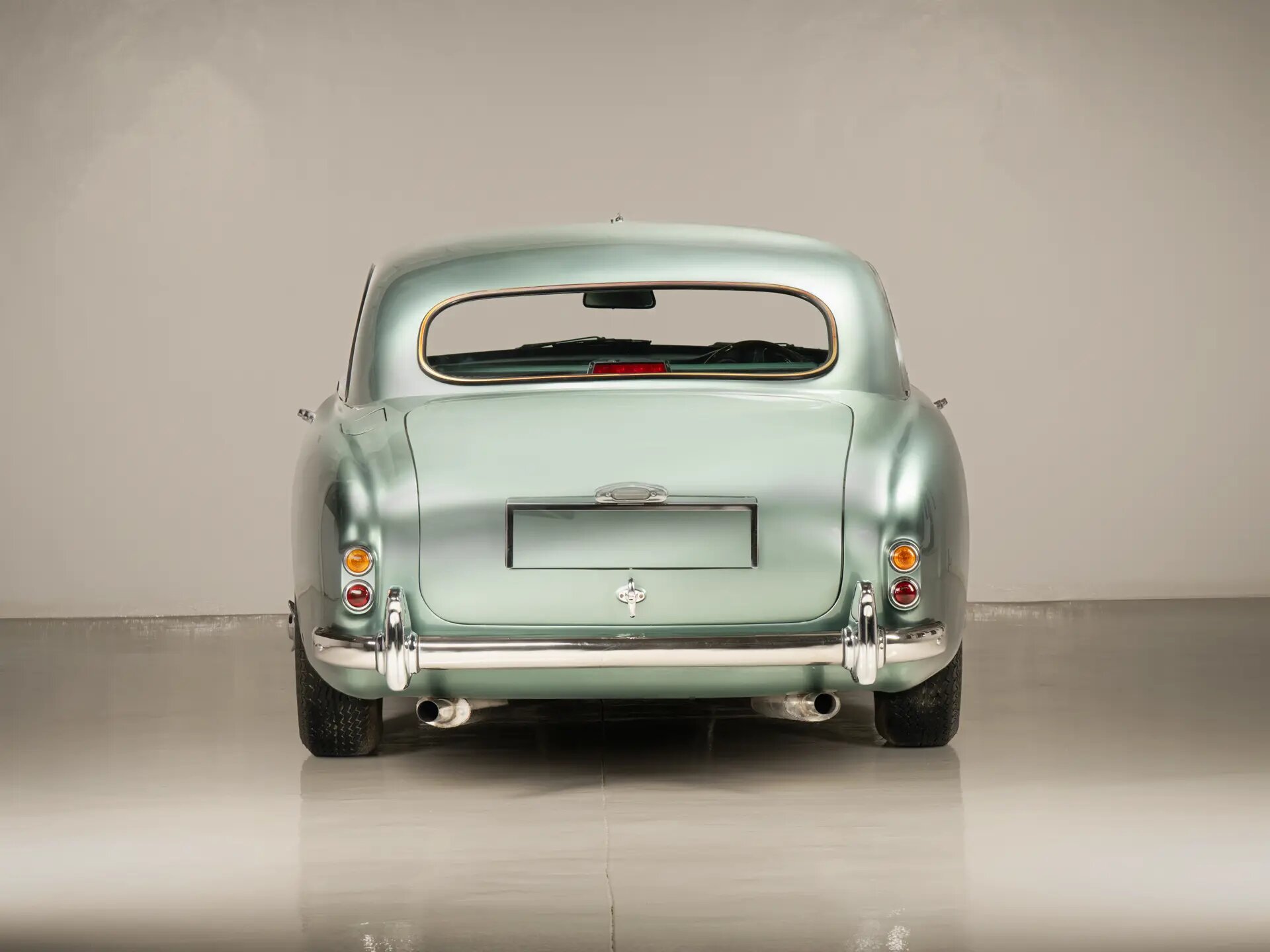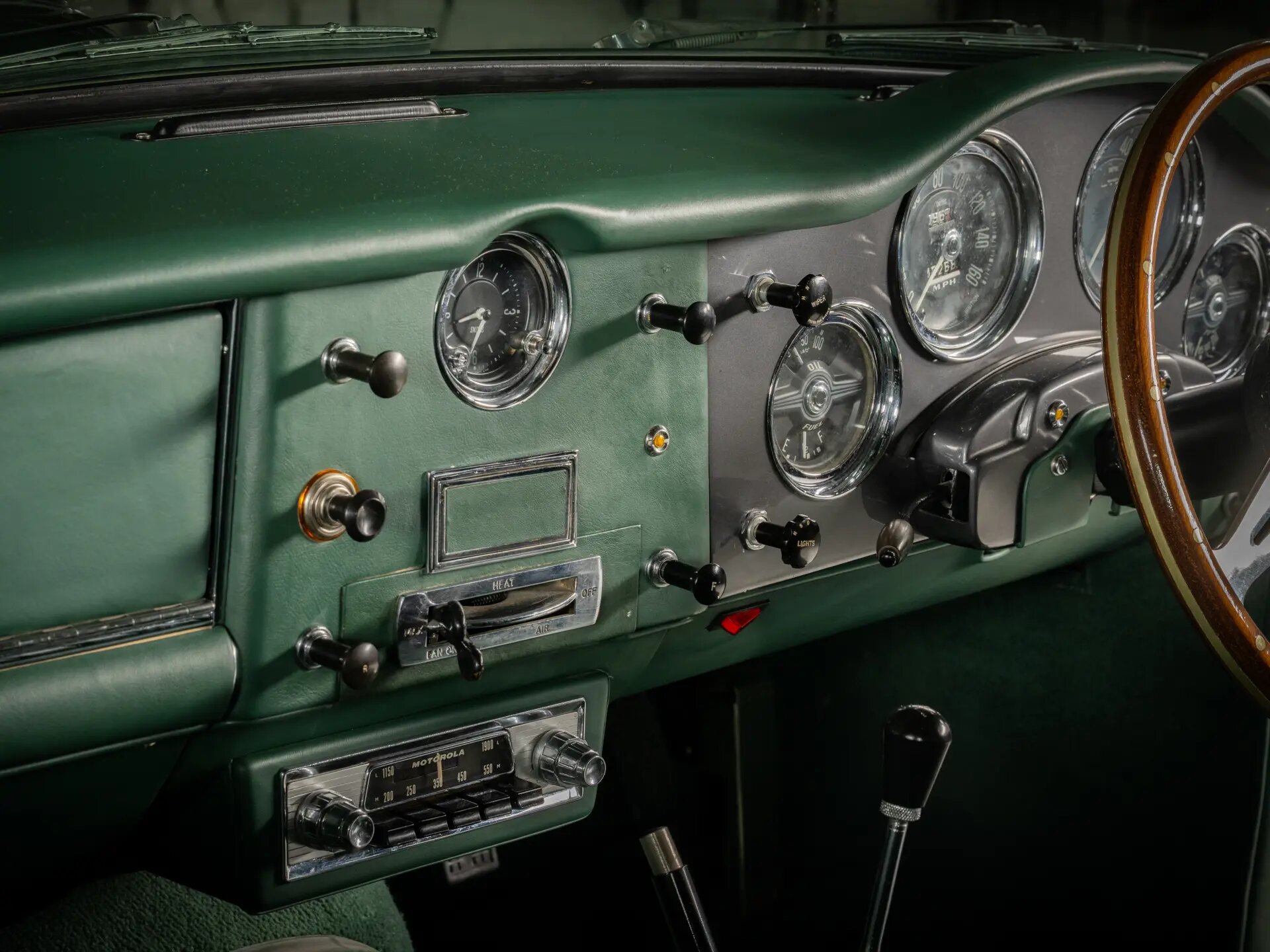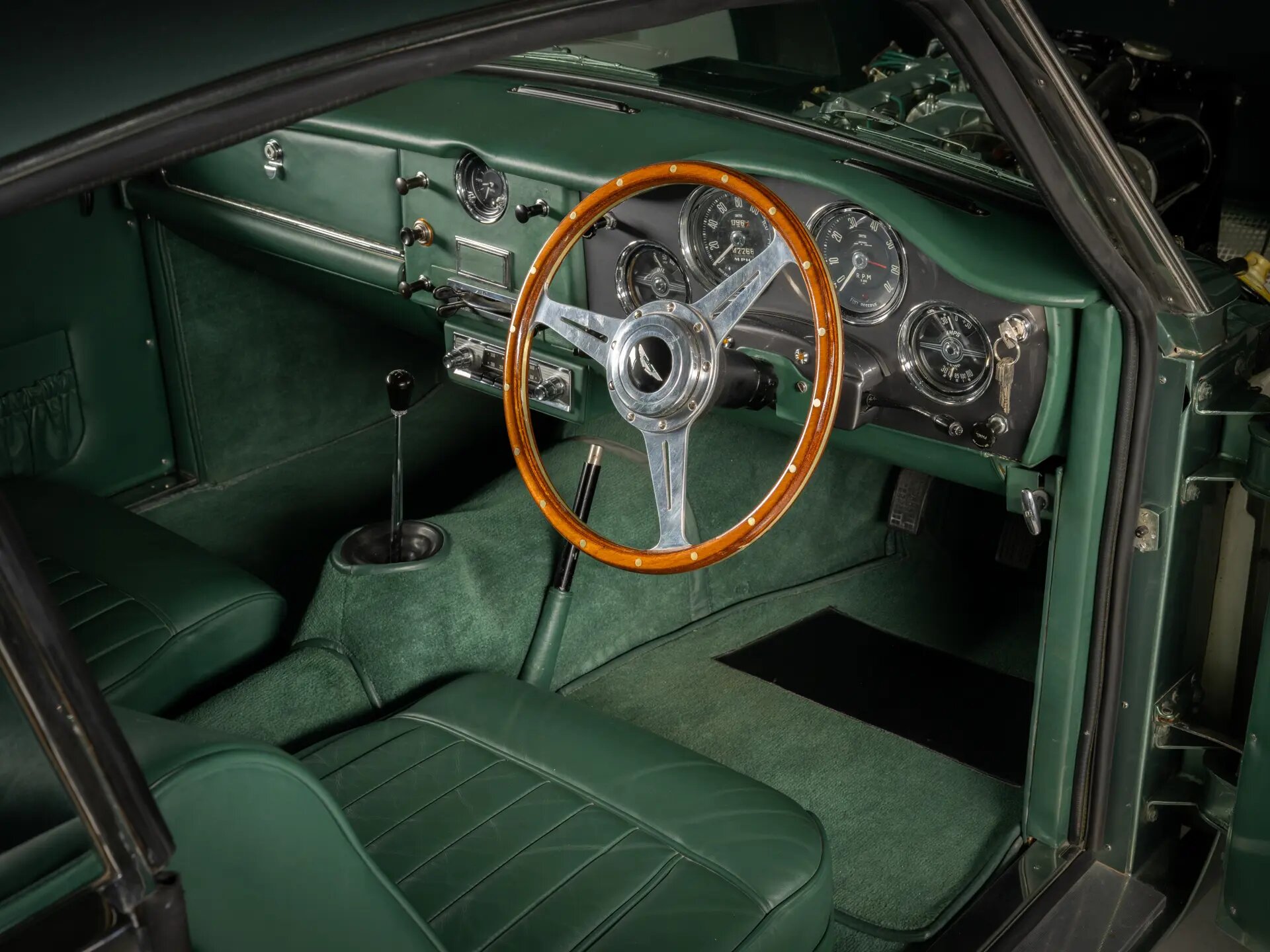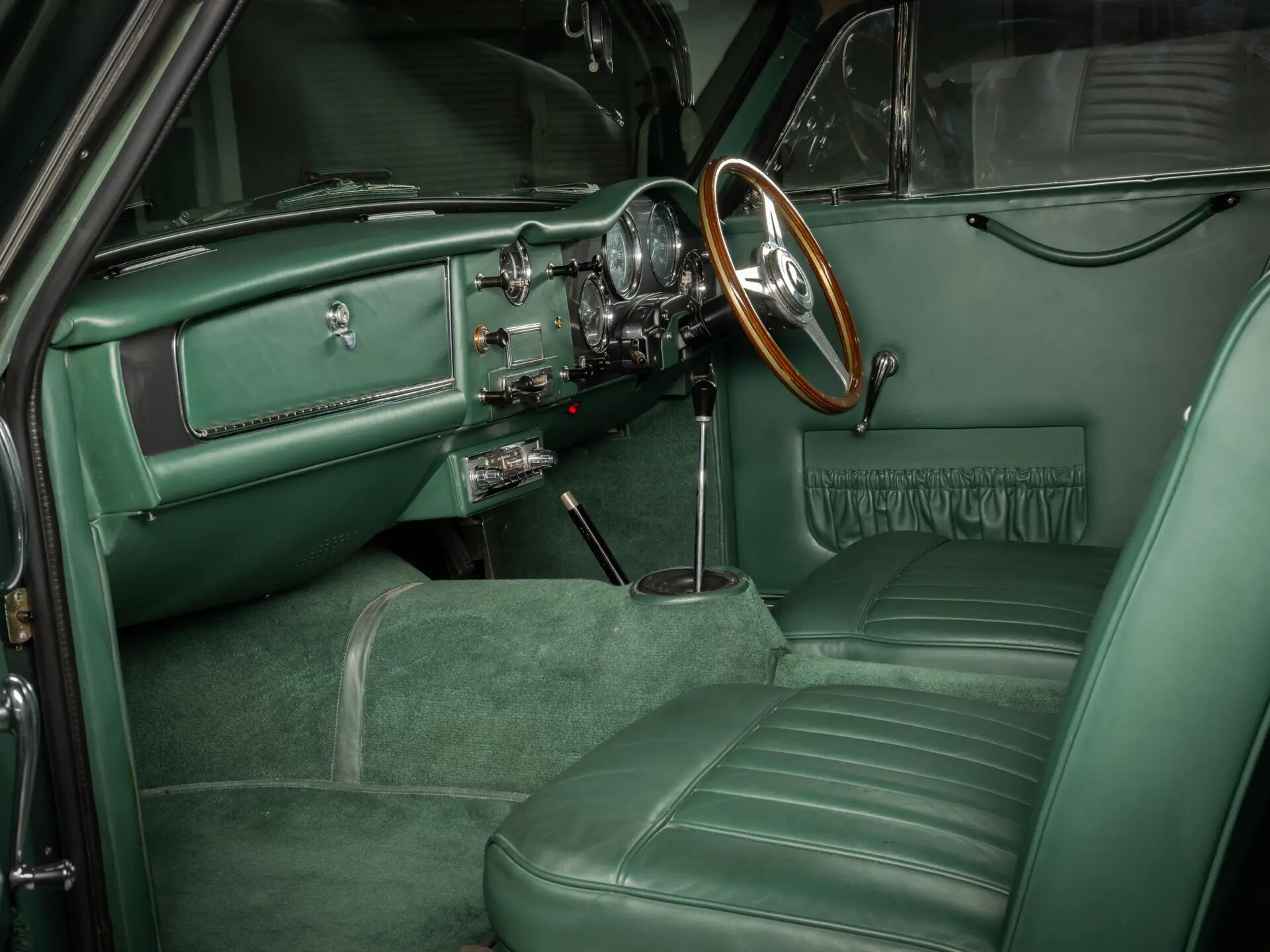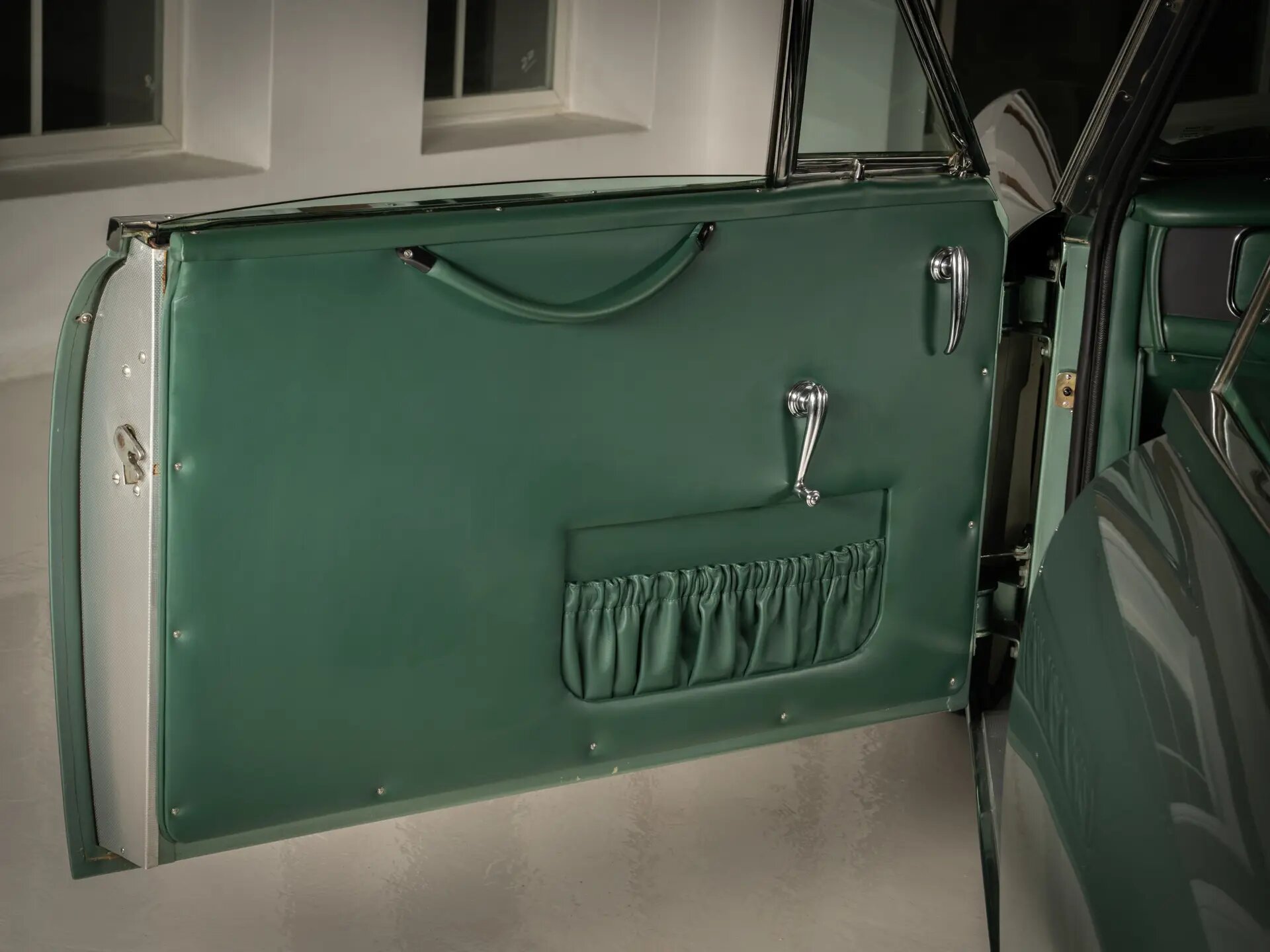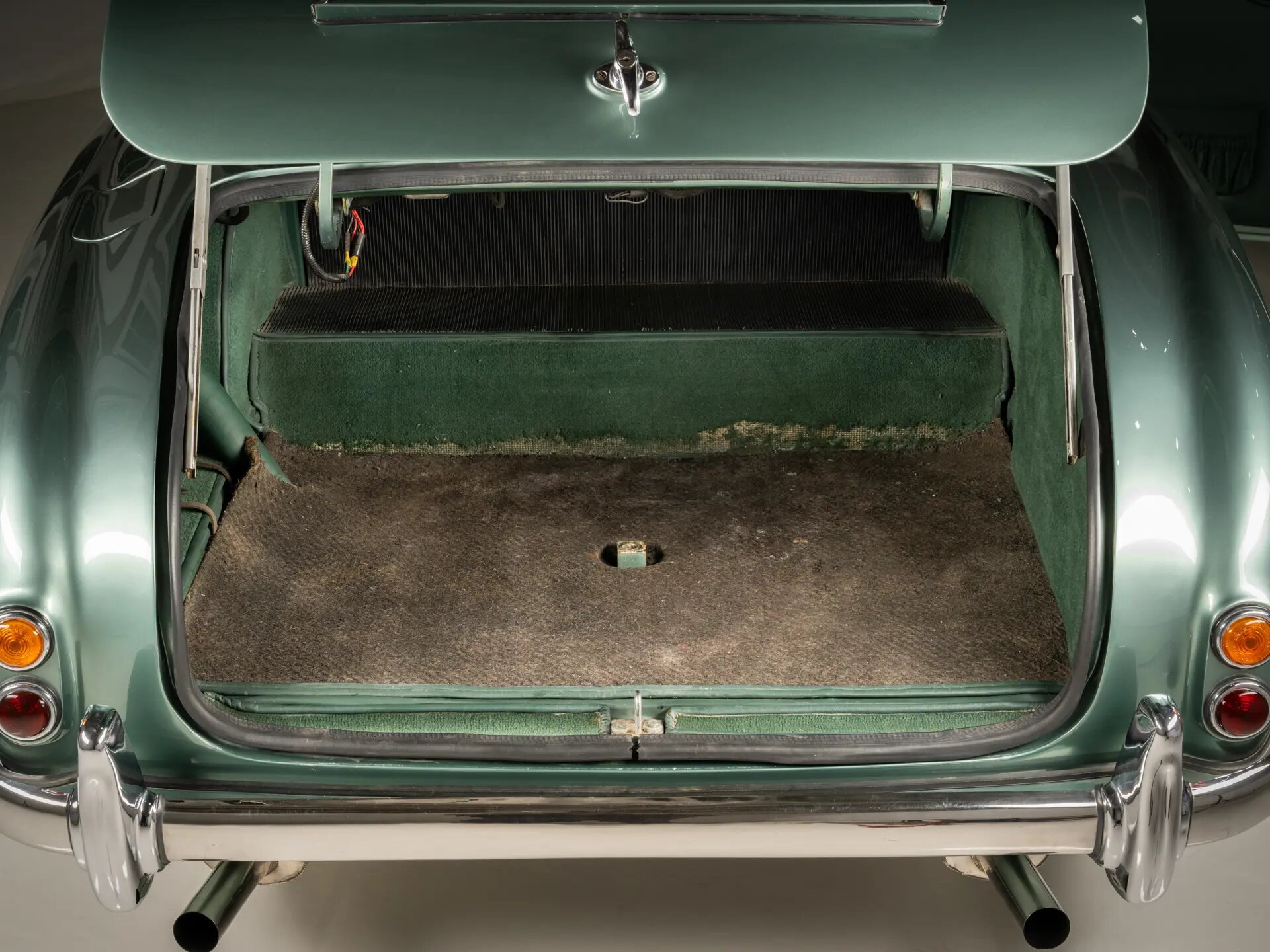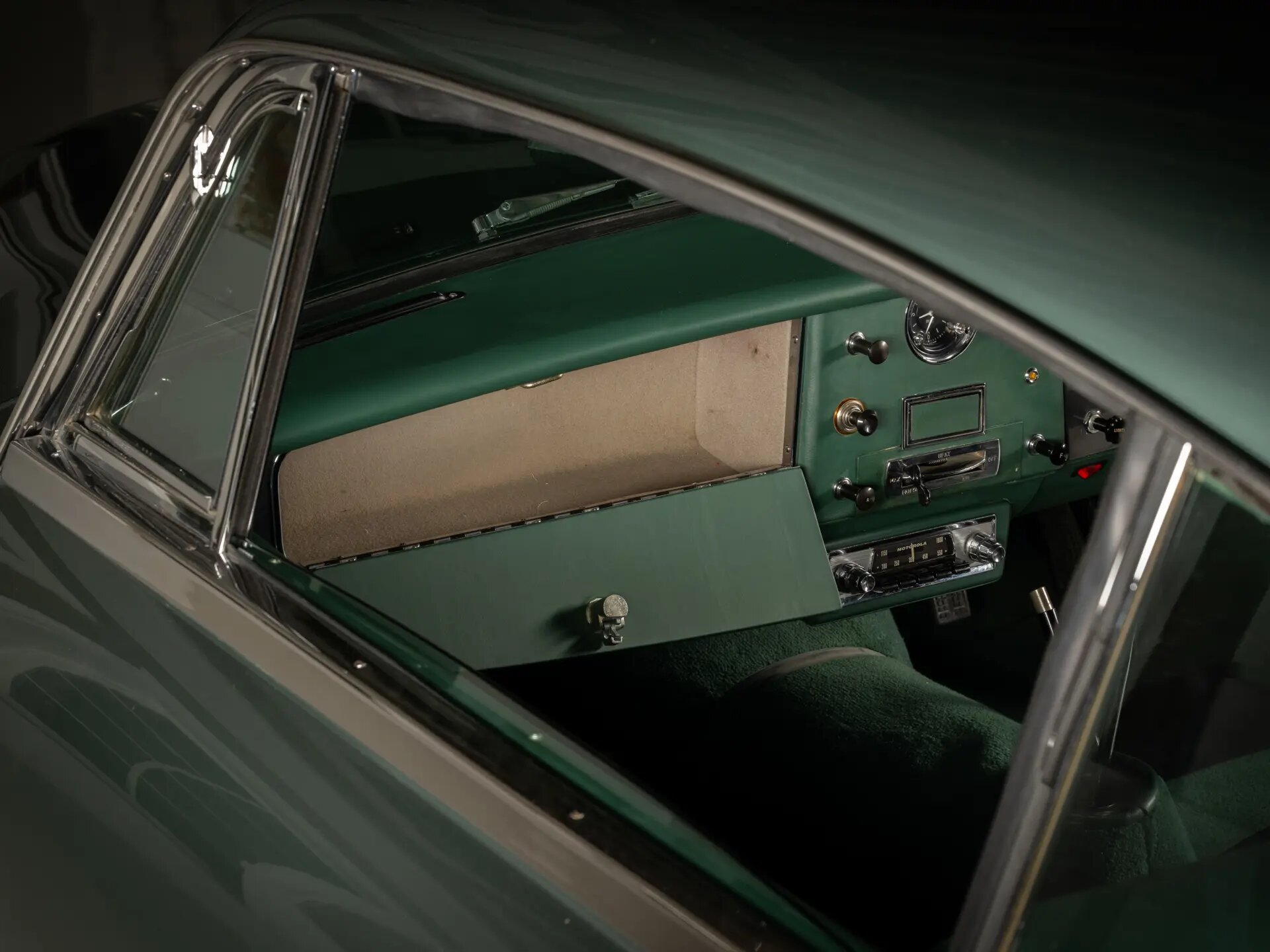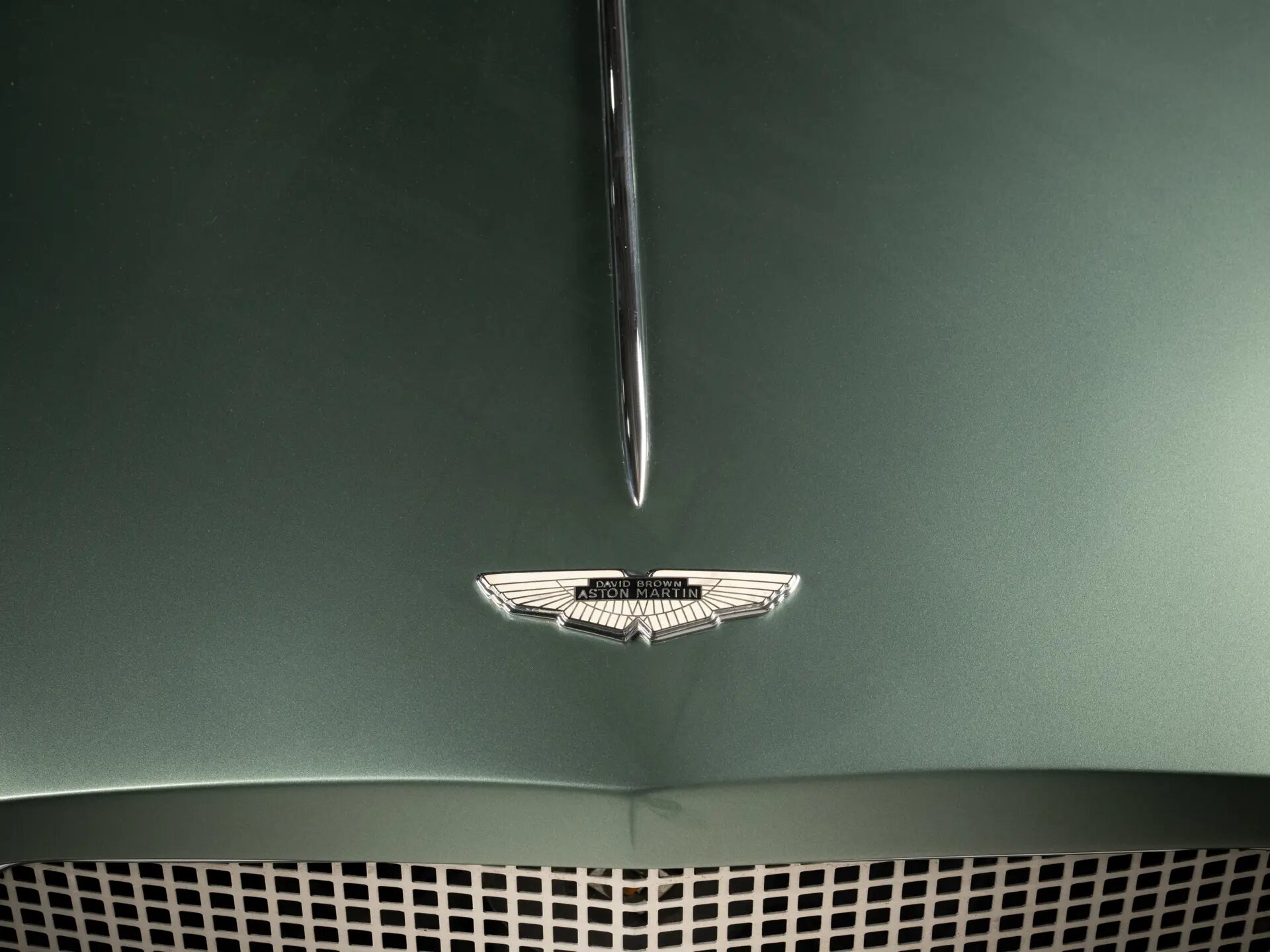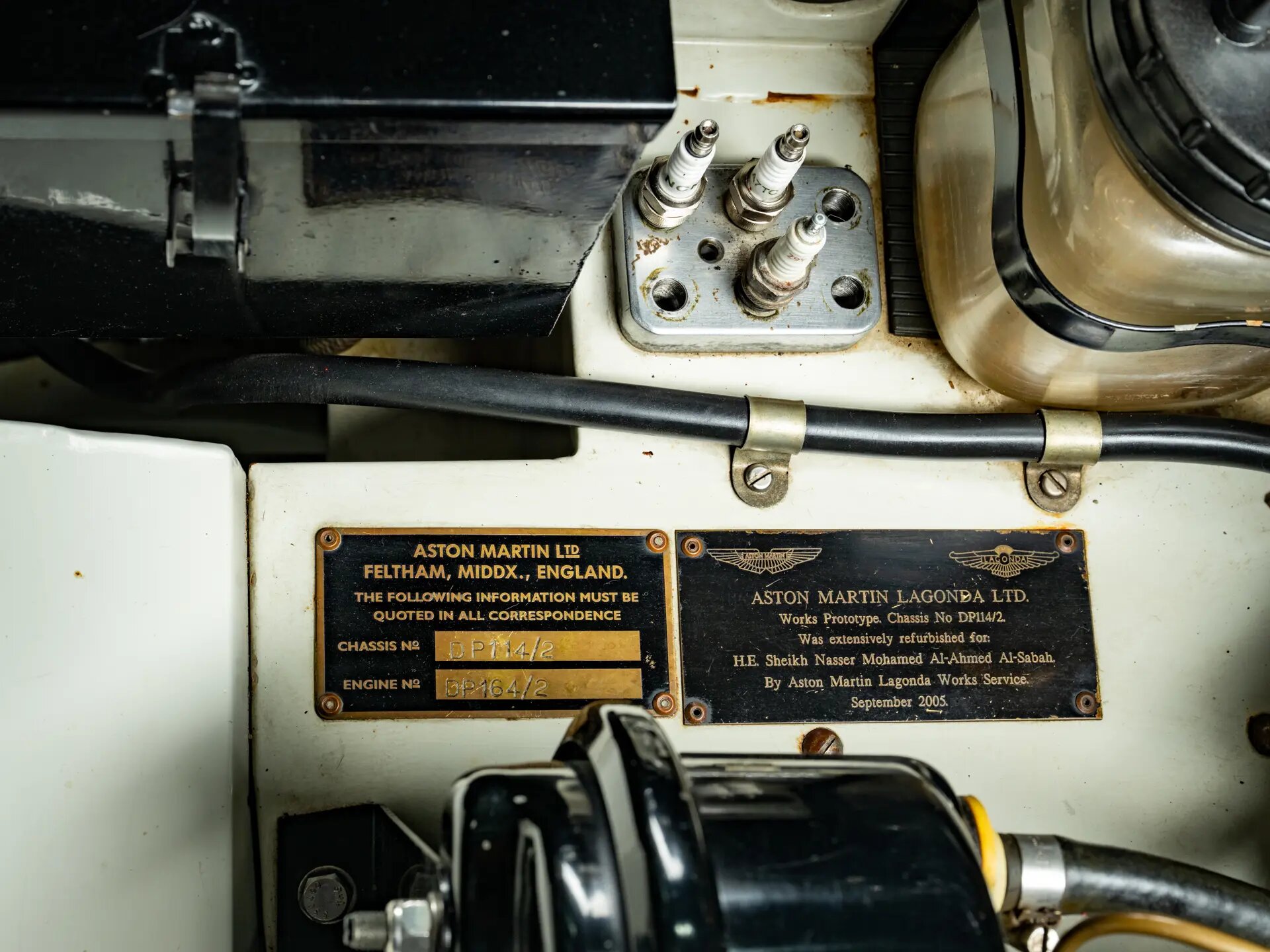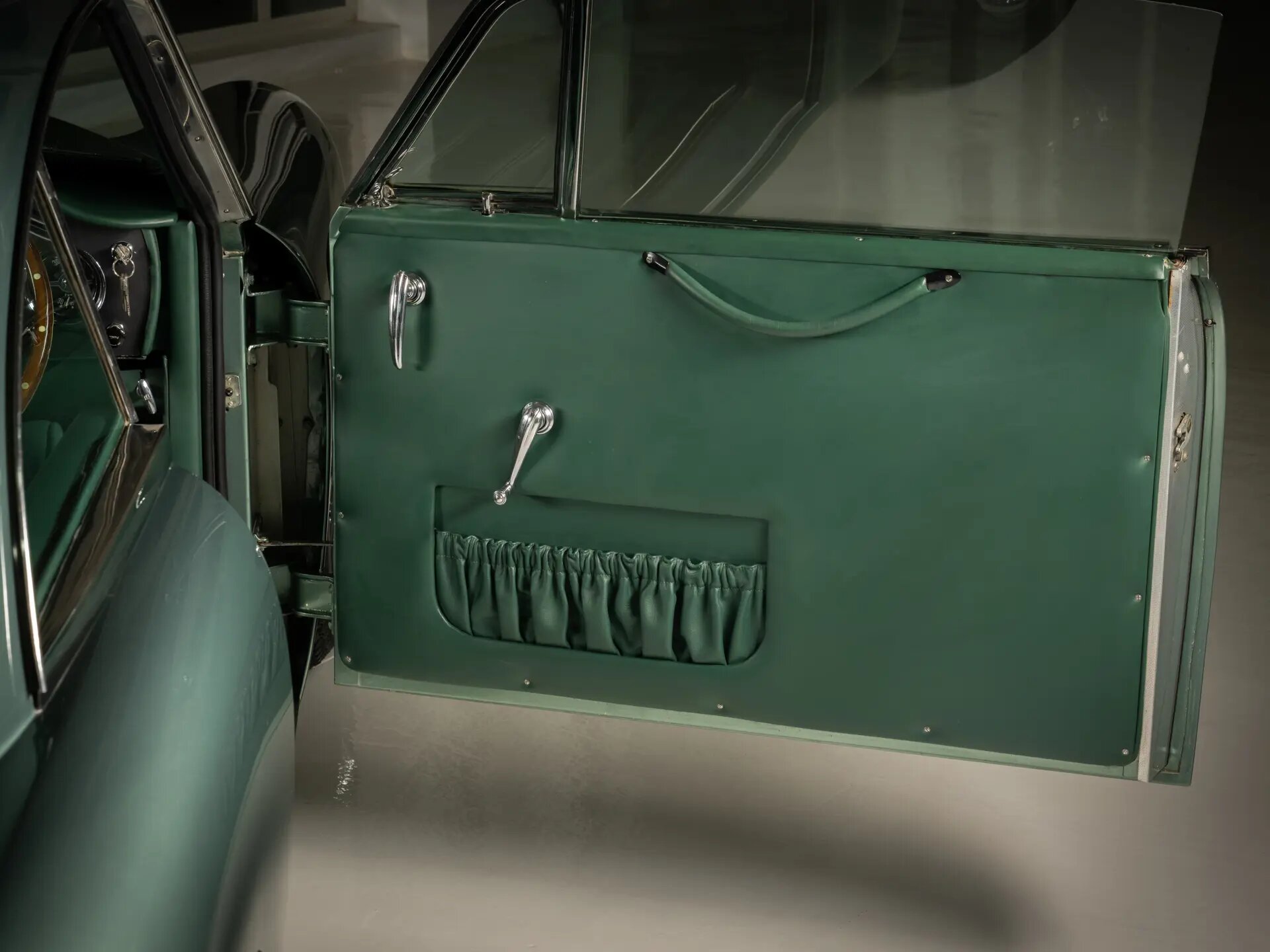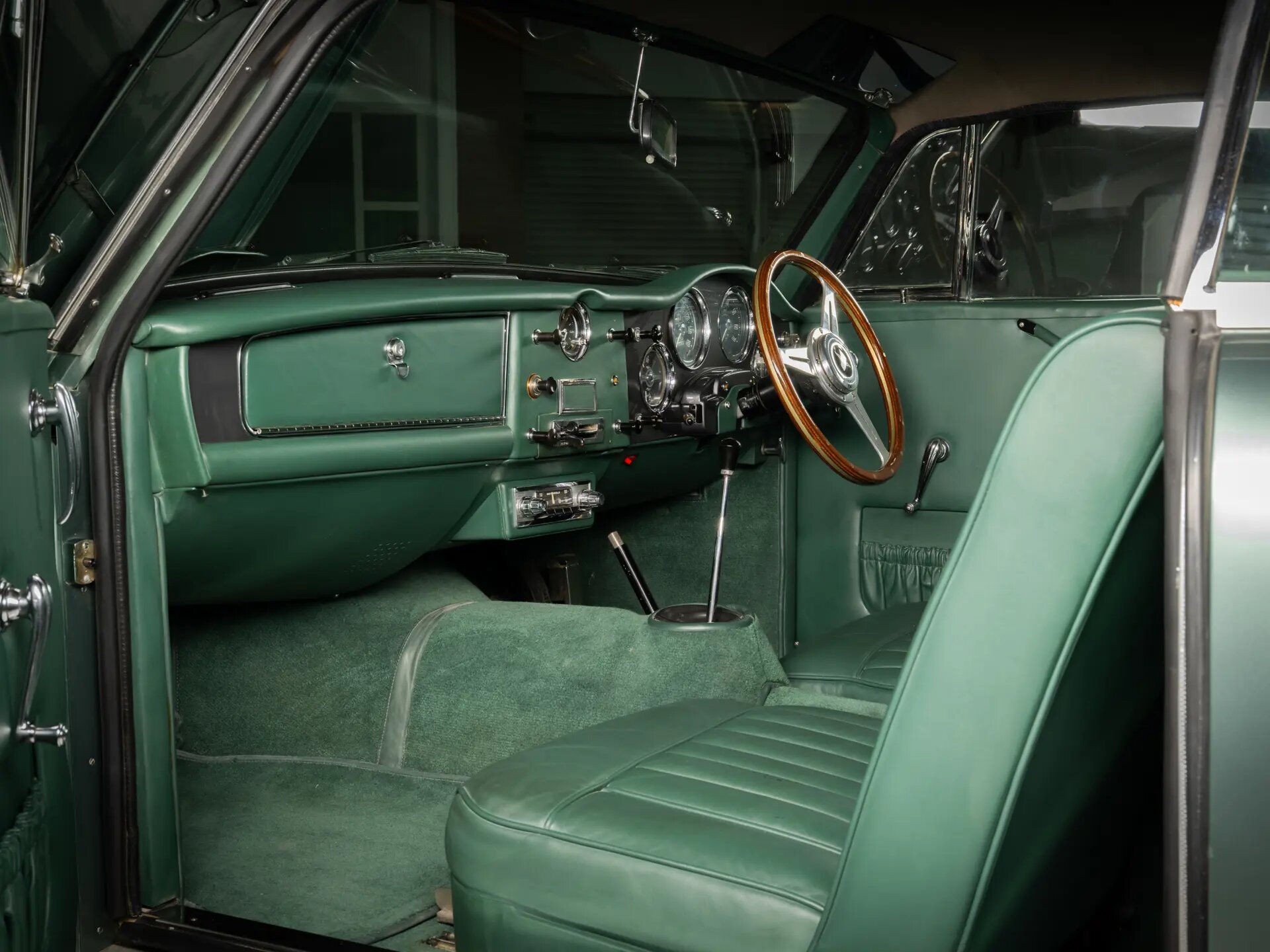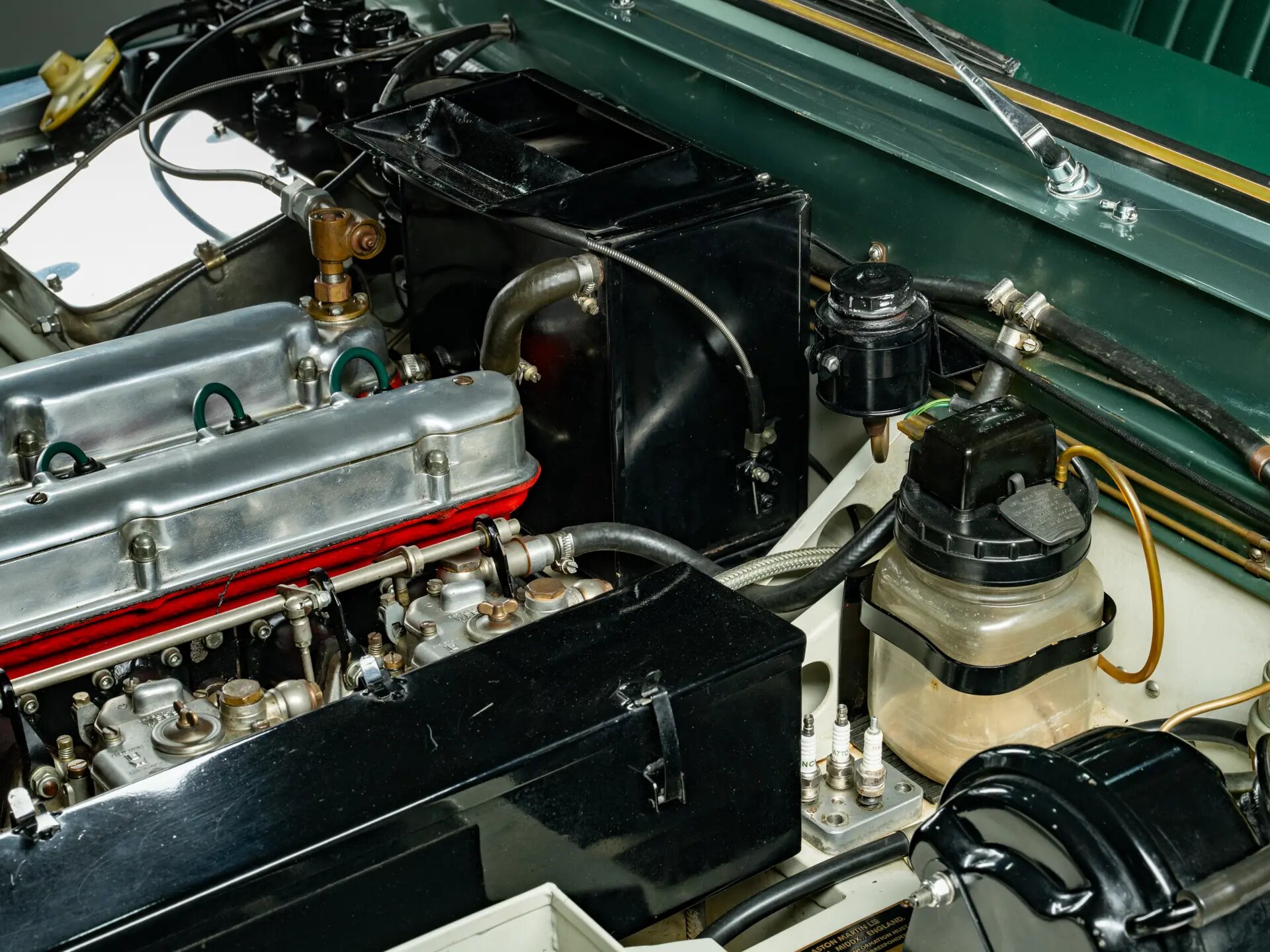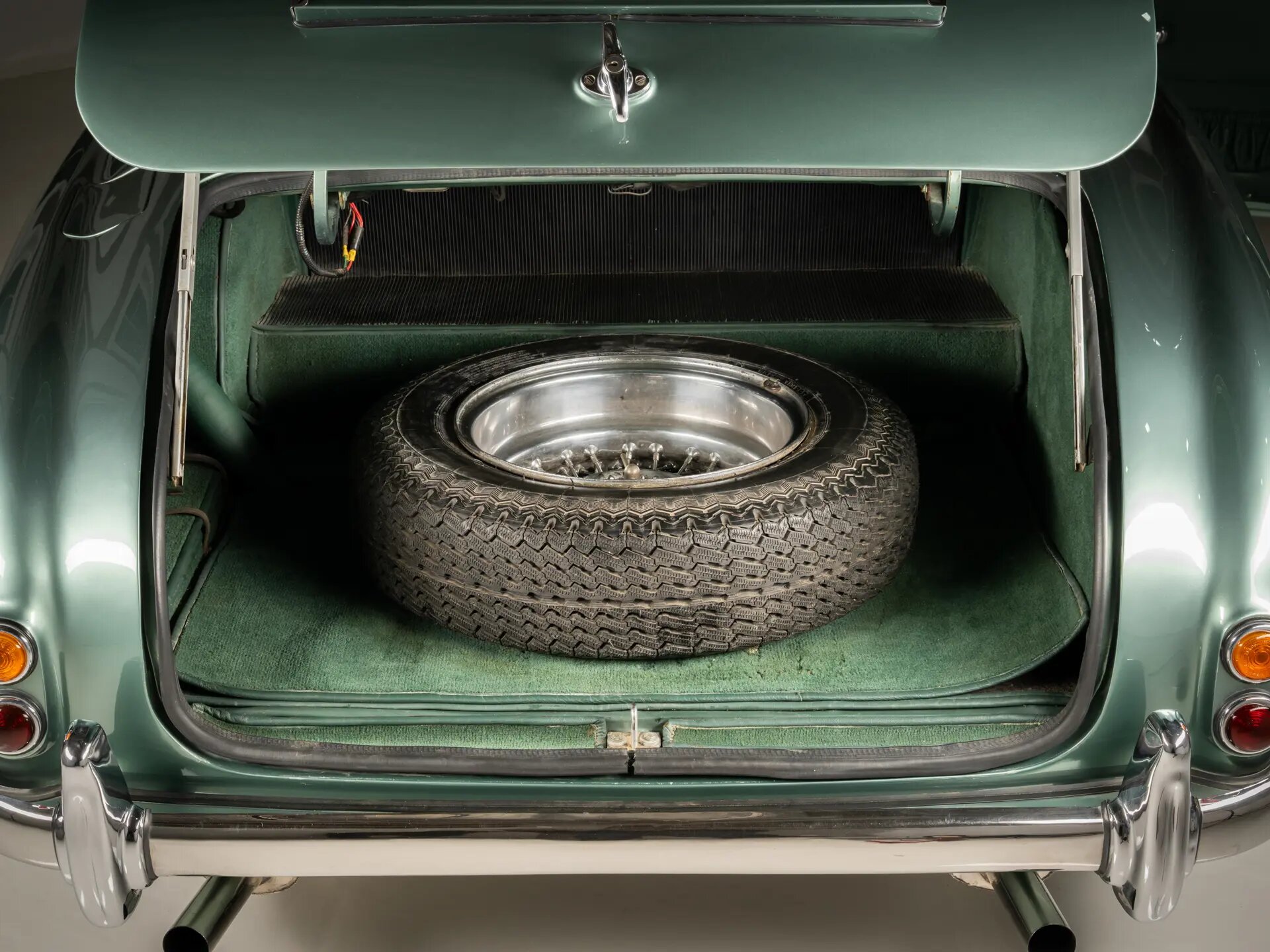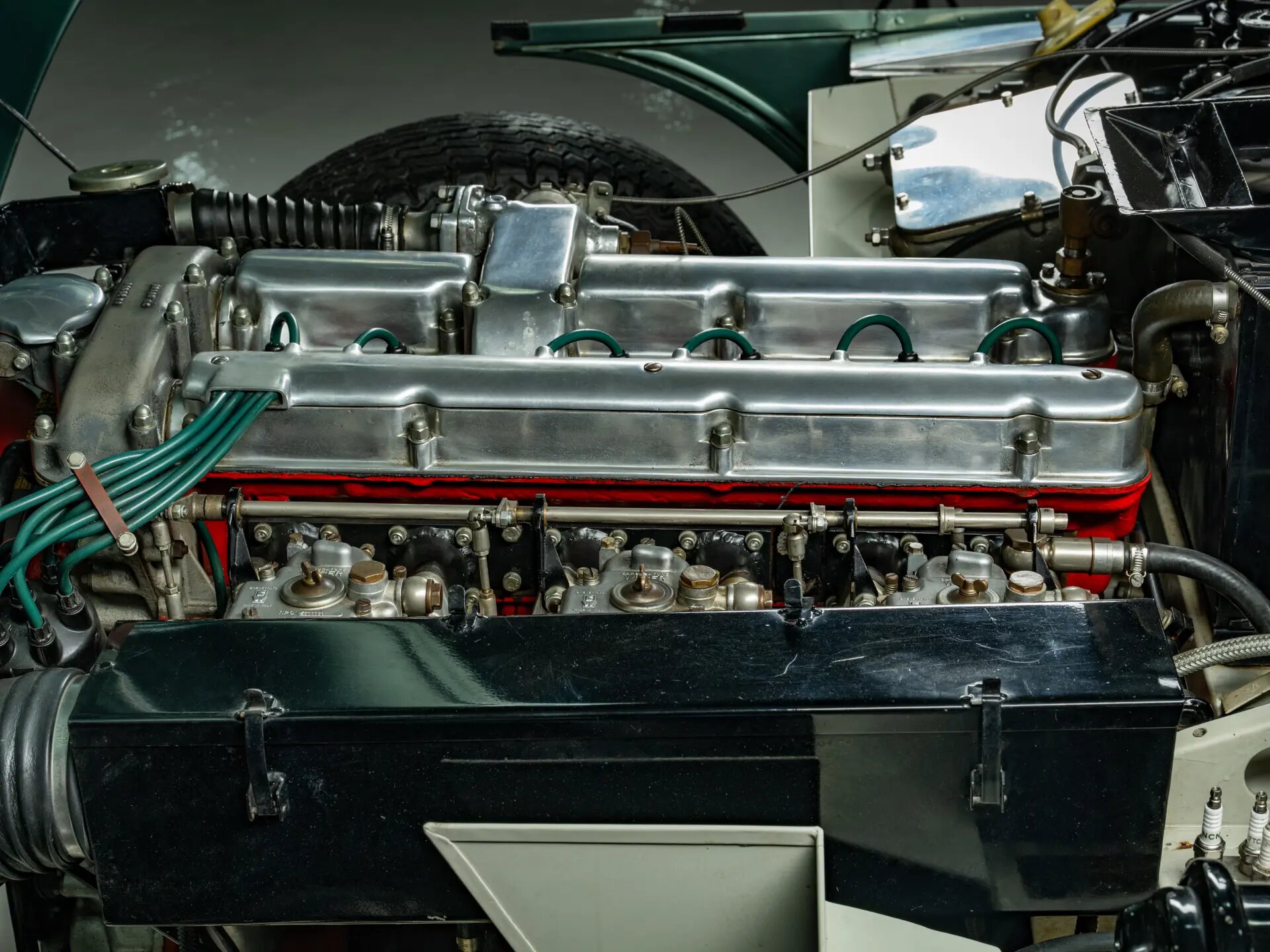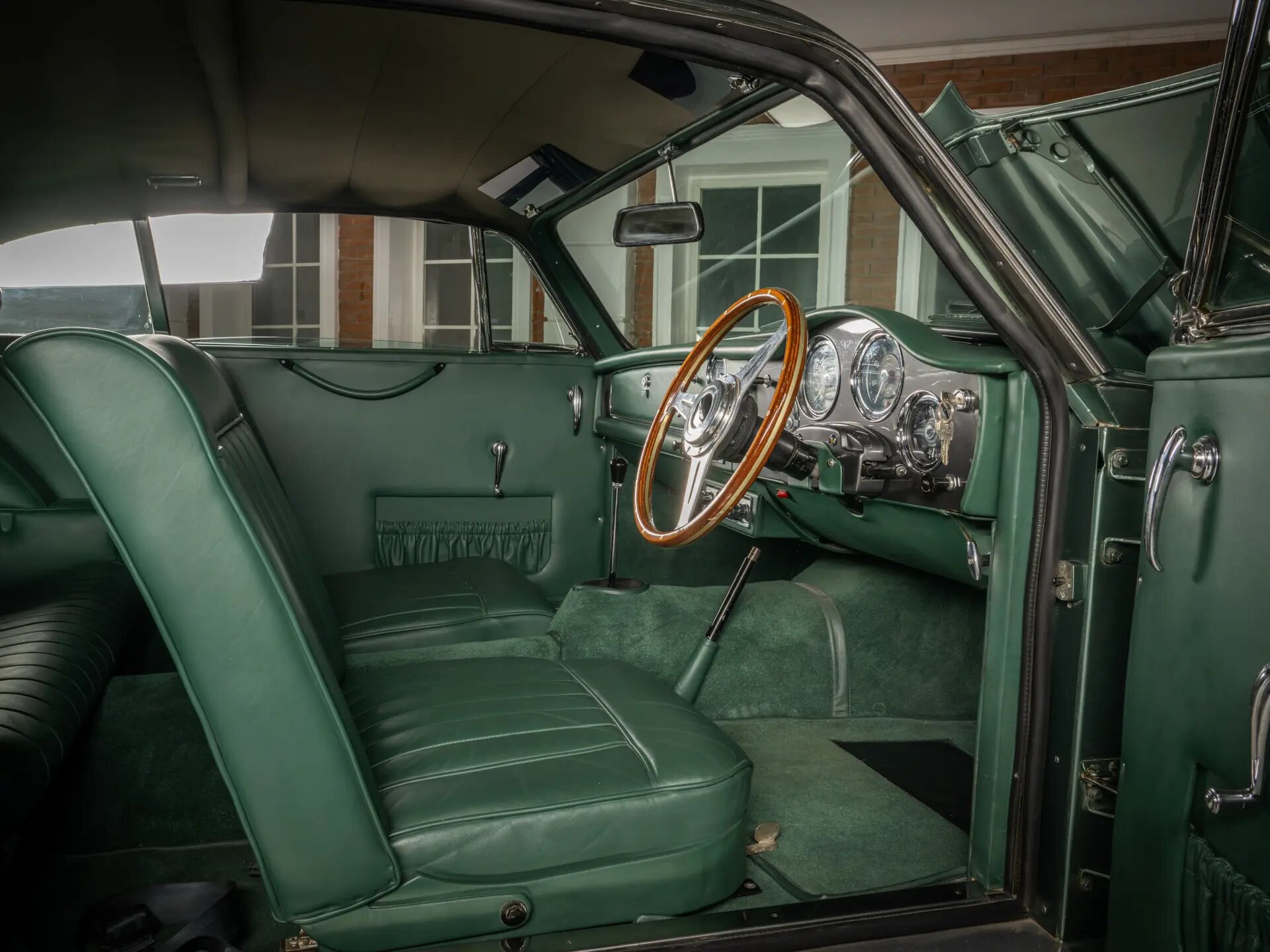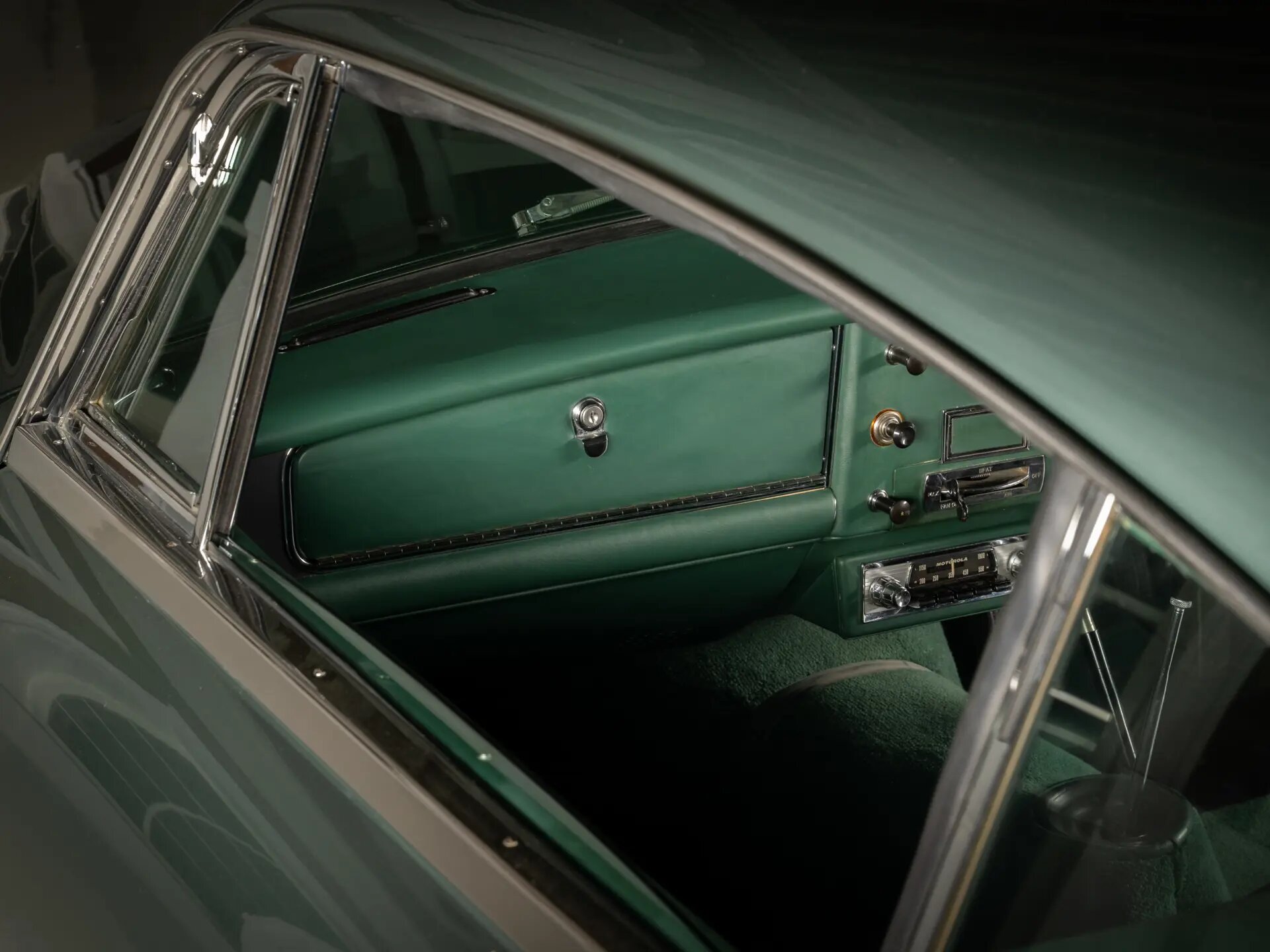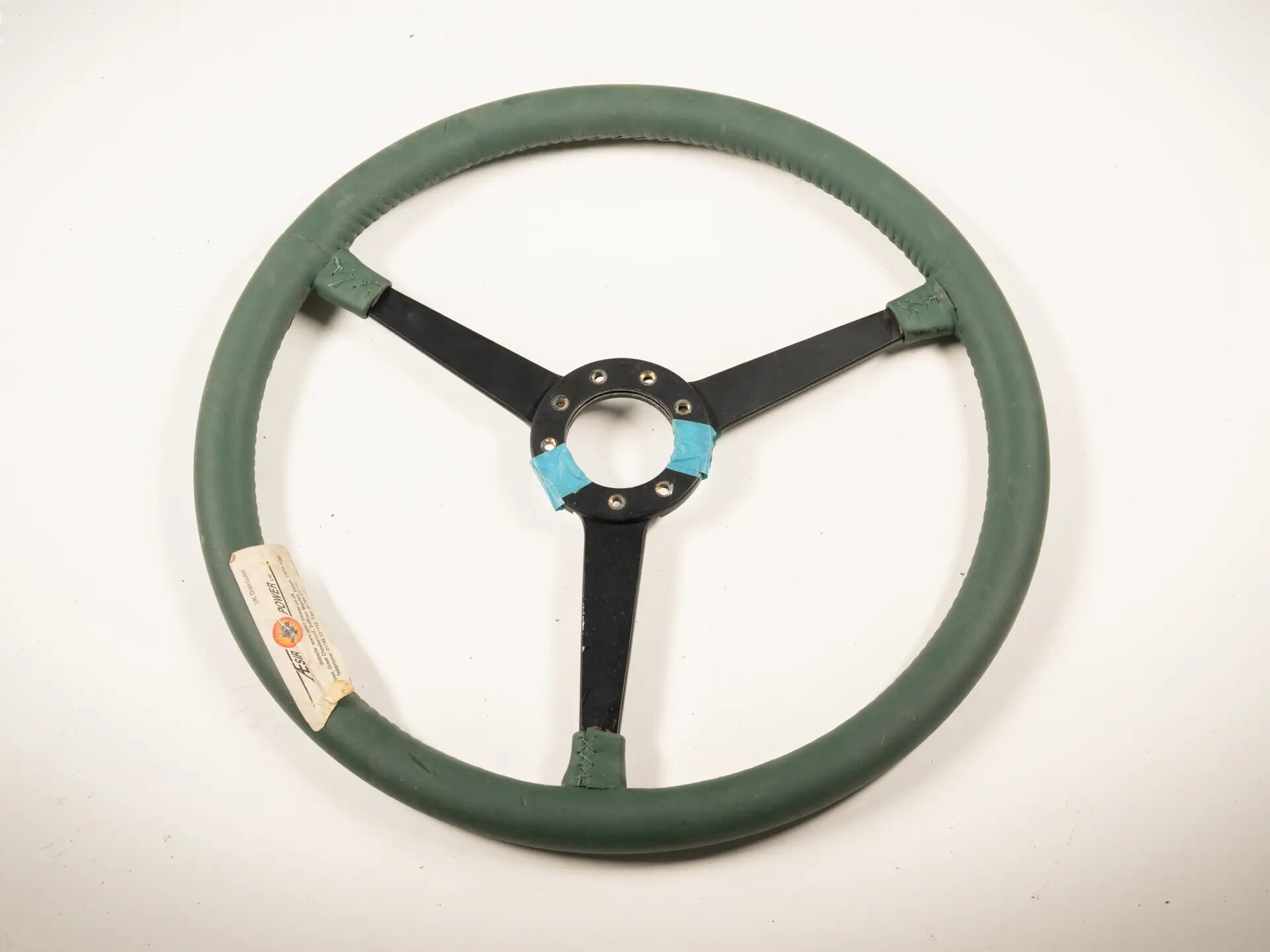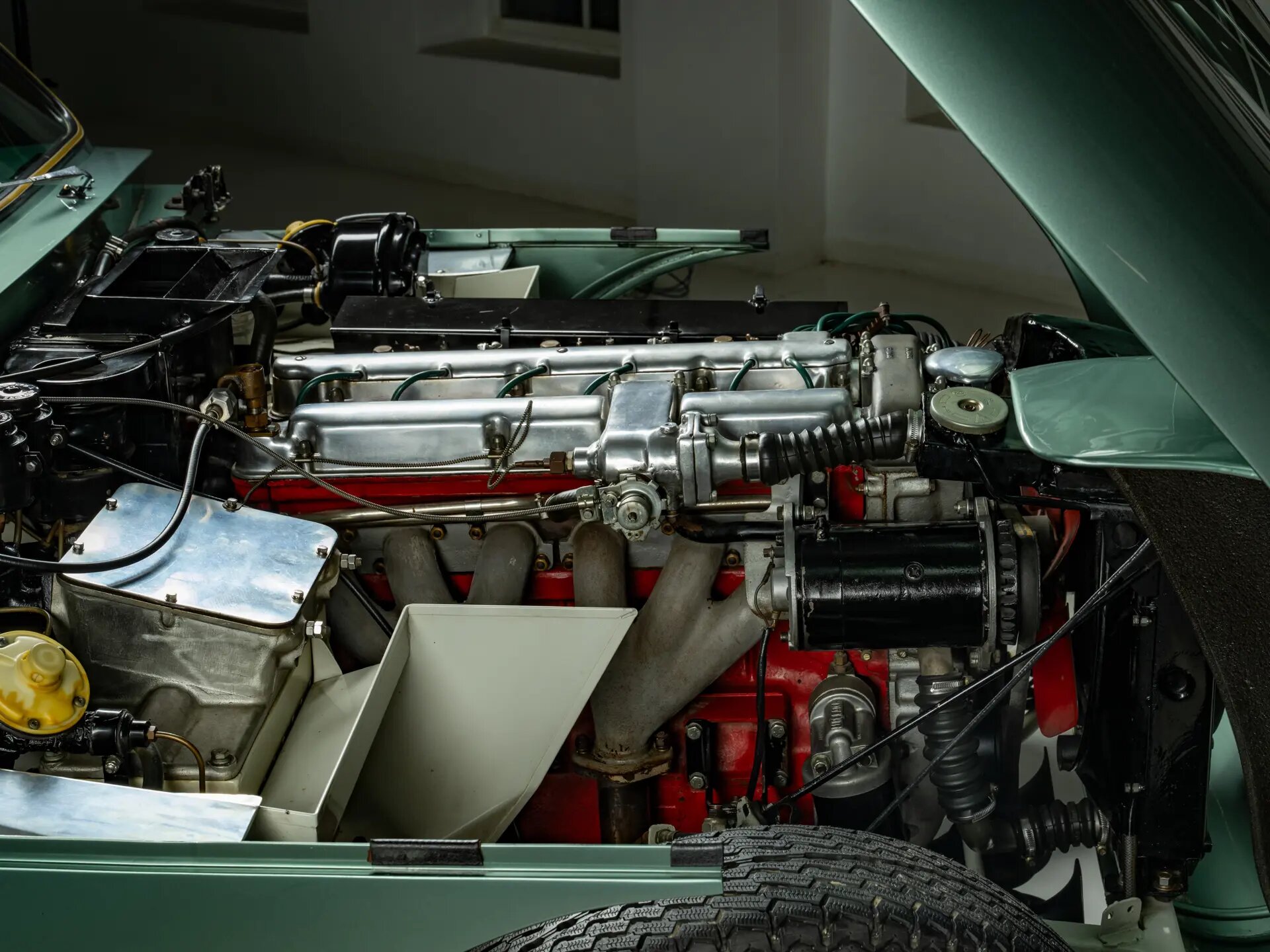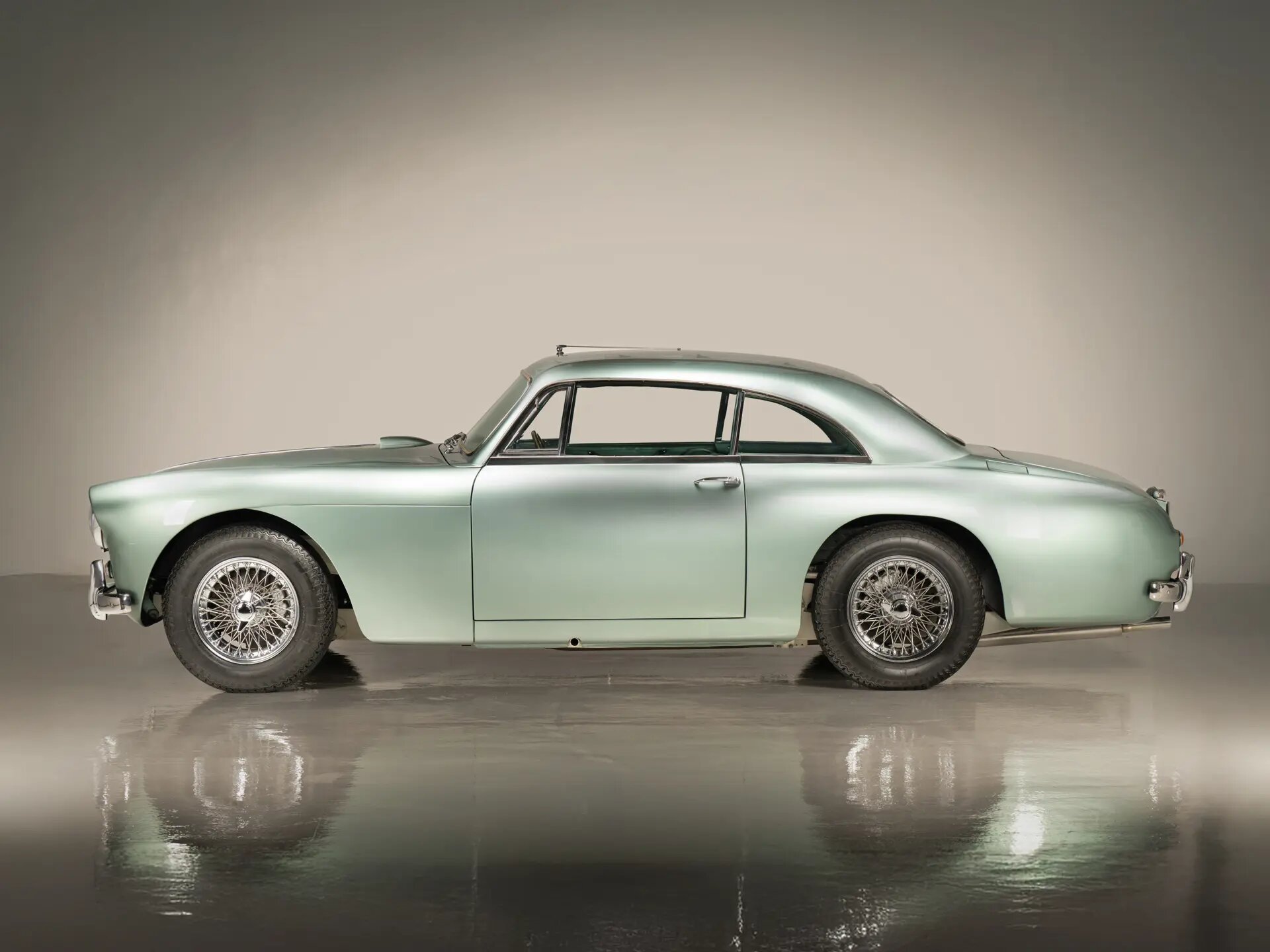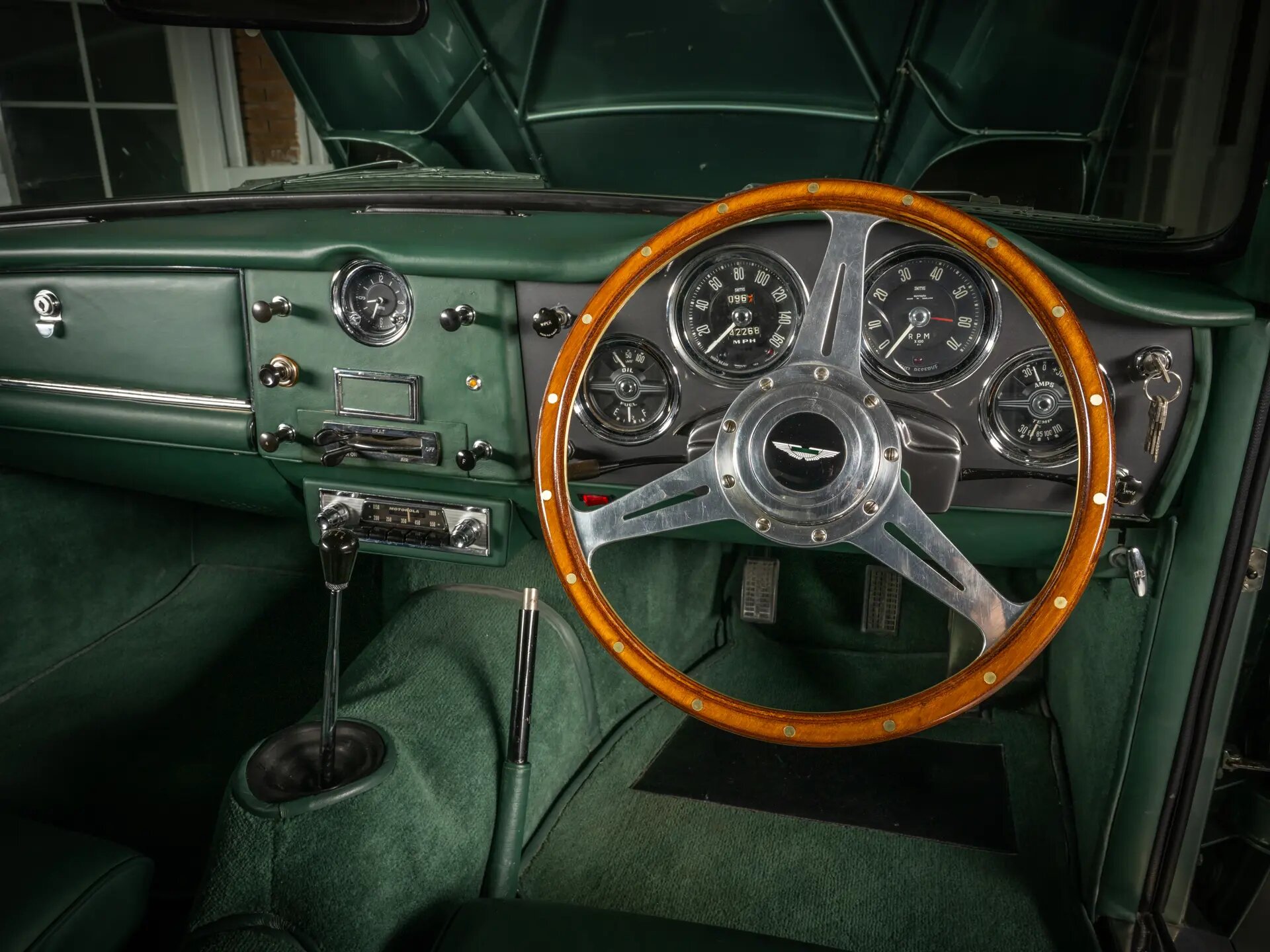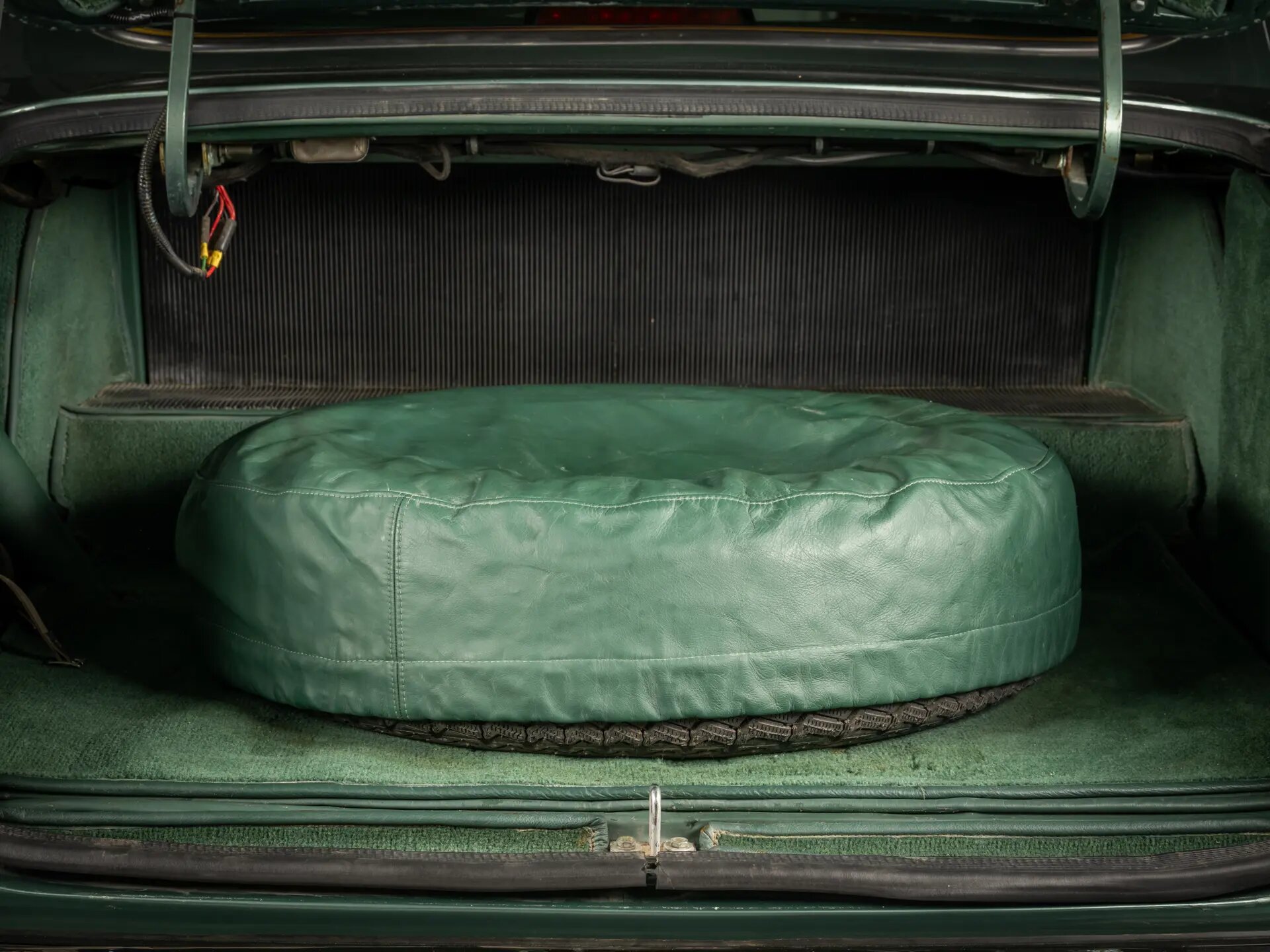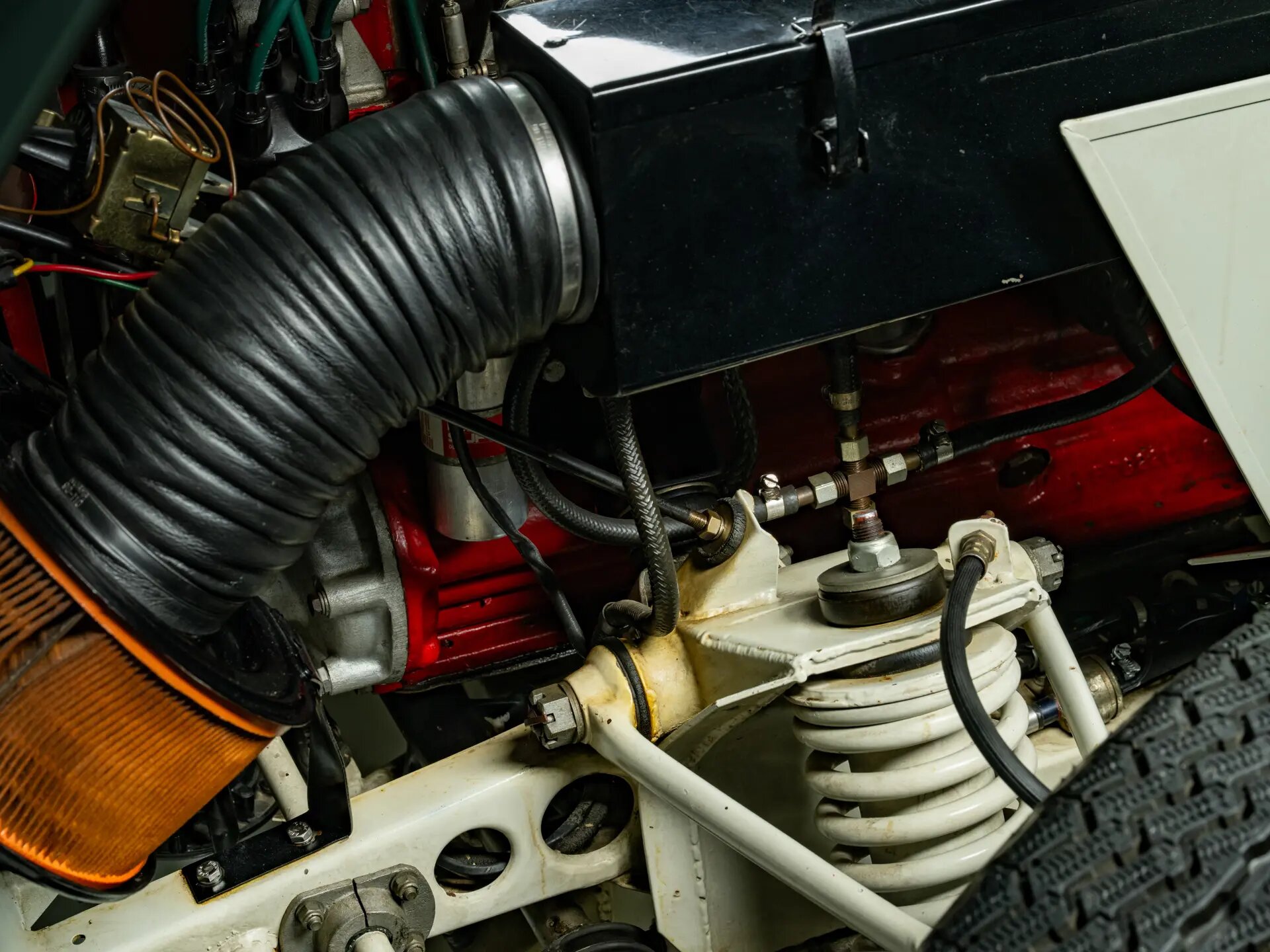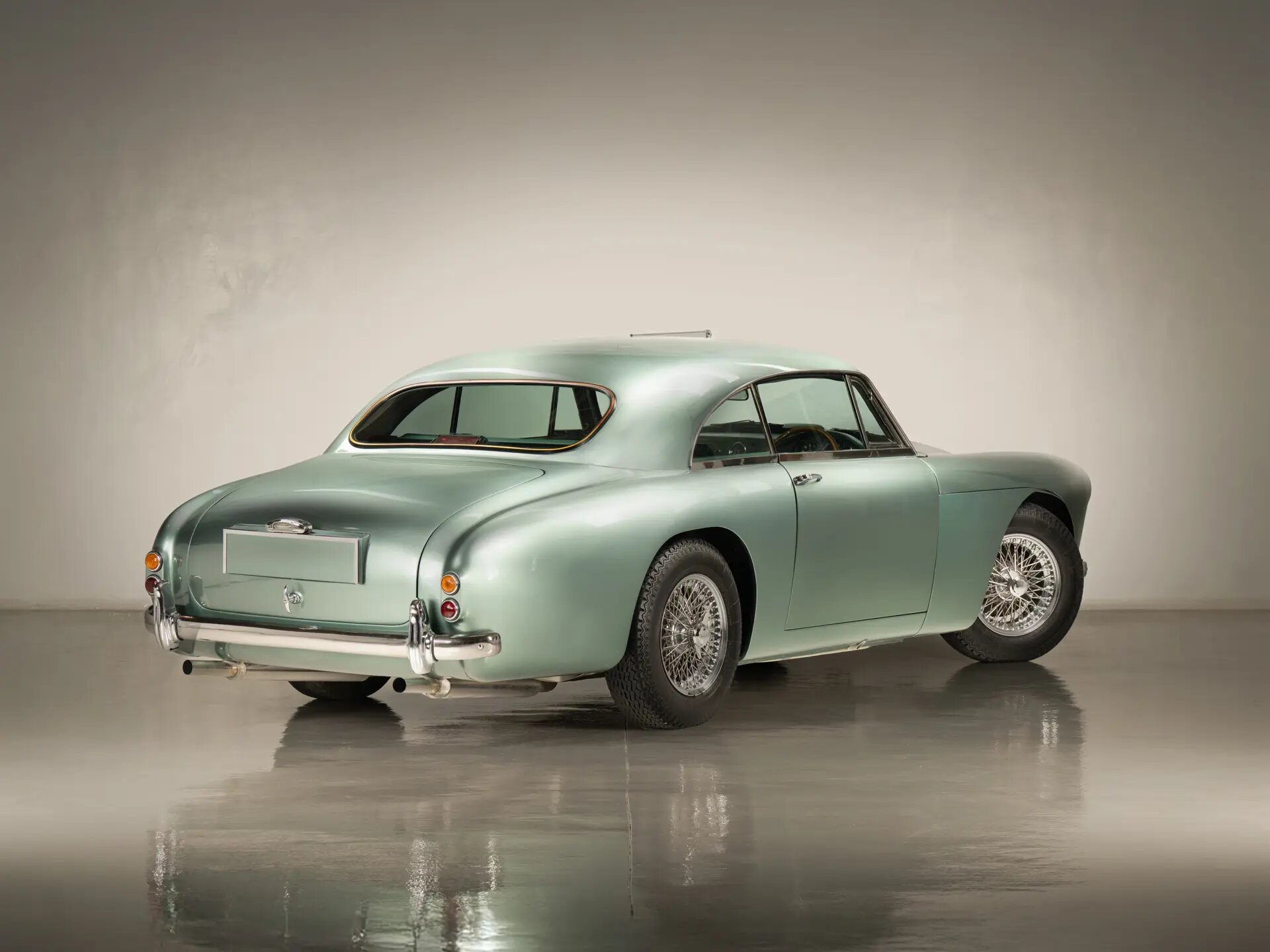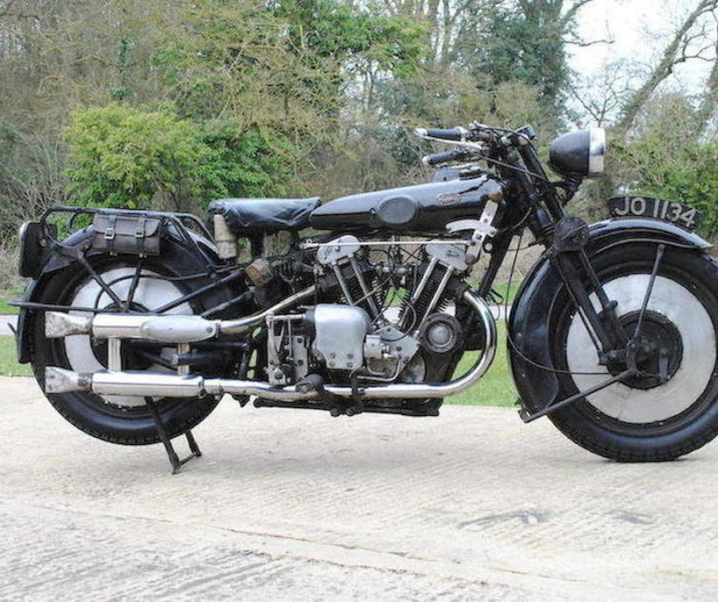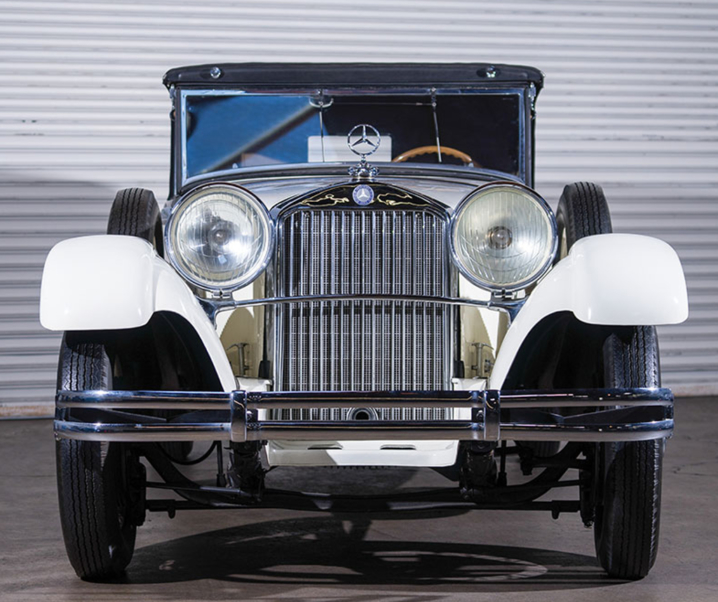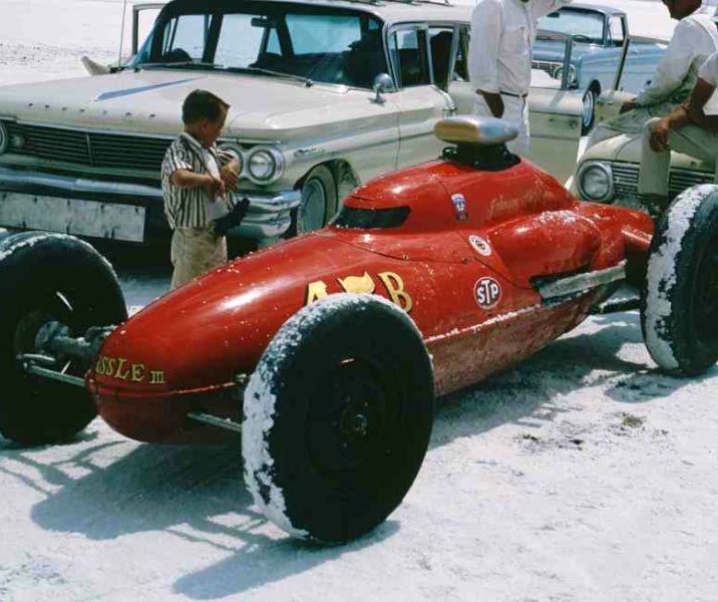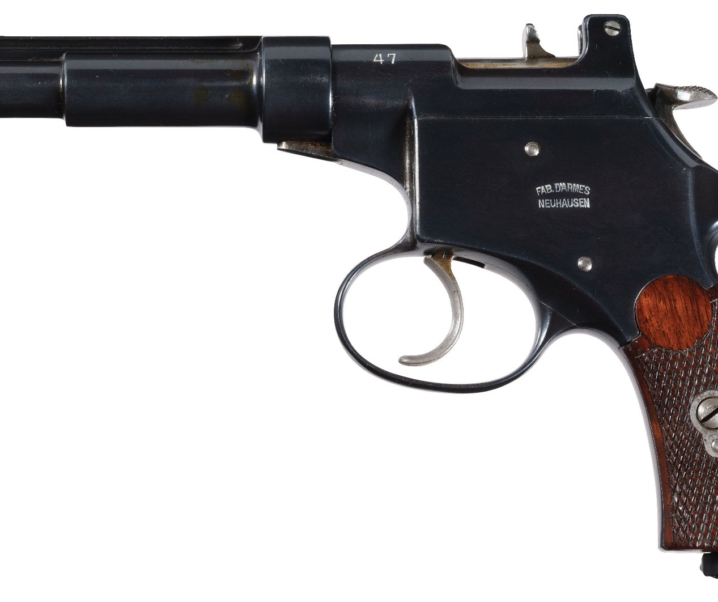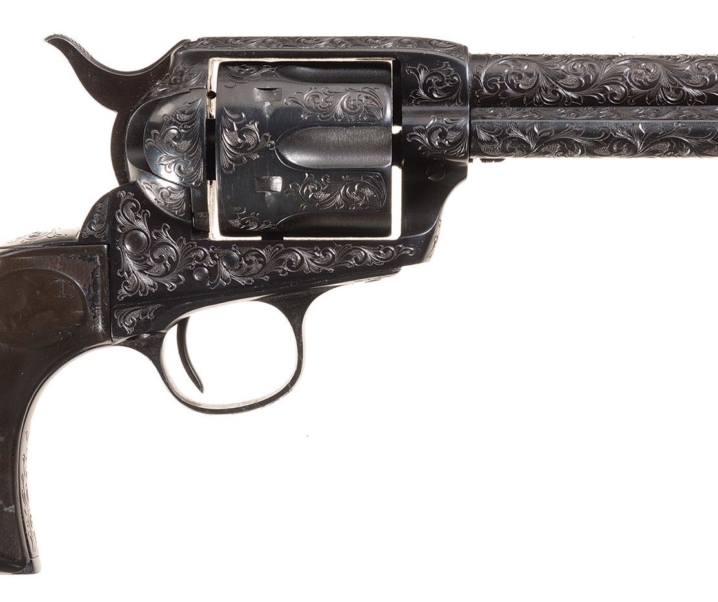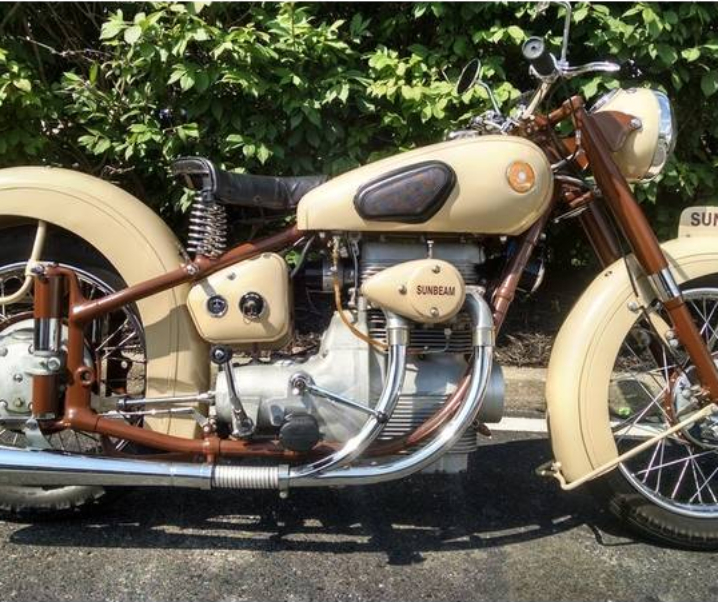The Aston Martin DB4 marked a leap forward for Aston Martin. Initially the company set about creating a technologically advanced new model with independent suspension and British styling. The second prototype in the development of the DB4 survives to this day, it was designated the DP114/2.
Fast Facts
- Design and development work for the new Aston Martin DB4 began in around 1954.
- As a part of the process of development of the new model two prototypes were created: the first was designated DP114 and was ultimately scrapped, the second was DP114/2 and it has survived through to the present day.
- Both prototypes were designed on a perimeter chassis by Aston Martin’s Chief Engineer Harold Beach with the coachwork design by in-house stylist Frank Feeley.
- The Aston Martin prototype DP114/2 is coming up for sale by RM Sotheby’s at their Cliveden House auction to be held on July 8, 2025.
It was around 1954 that the design and development team at Aston Martin began work on the replacement for their then current model: the DB2.
Work on this new model was done in-house and included efforts to significantly improve the chassis and suspension systems over the existing design of the DB2.
The new chassis was a tubular perimeter design done by engineer Harold Beach and a first prototype desginated DP114 (i.e. “Development Prototype” 114) was constructed.
DP114 revealed that there was room for improvement and so it was scrapped and the design and development team went back to their drawing boards where they wielded sharp pencils to create an Aston Martin that would truly be the great leap forward they intended to create.
The new prototype, designated DP114/2, was to be completed in 1957.
Harold Beach set about making the chassis more stiff while still using a perimeter design: and the suspension was to be made independent all around.
The front suspension for the new DP114/2 prototype was by upper and lower “A” arms with coil springs and tubular shock absorbers, while at the rear the new prototype was given a deDion type rear suspension. Brakes were Girling discs front and rear.
The engine and gearbox were straight from the DB2 Mark III. The engine was the 2.9 liter version of the original Lagonda DOHC 2.6 liter straight six as re-engineered by Tadek Marek.
The engine fitted to the DP114/2 prototype appears to be fitted with the triple dual choke Webers and so looks to be a higher performance version of that engine.
The body design for DP114/2 was entrusted to Aston Martin’s own stylist Frank Feeley who created a design that looks utterly classic Aston Martin – it looks like a “James Bond” car, graceful and yet purposeful. Sacrilegious though it may be I think it actually looks more like a Bond car than the DB5 he drives in the movie “Goldfinger”.
This new prototype was a car with a fabulous presence about it, but it was not yet the style of car that Aston Martin wanted for their new DB4 model. Sir David Brown was not entirely happy with DP114/2 both in its appearance and its performance: great car though it was it did not fit his vision for Aston Martin’s future. DP114/2 looked unmistakably British, but Aston Martin wanted something with a dose of Italian beauty.
Aston Martin’s Chief Engineer Harold Beach decided to head to Europe in the late 1950’s on a bit of a fact finding mission. He made his way to Italian coachbuilder Touring of Milan curious to investigate their “Superleggera” coachbuilding method.
Touring suggested to Harold Beach that Aston Martin use a platform chassis for their new car, and recommended their Superleggera coachwork to go onto it.
The Touring Superleggera coachwork incorporated a steel tubing frame with aluminium body panels attached to it. This combination of platform chassis and Superleggera coachwork proved to be the foundation that would be chosen by Aston Martin for their upcoming DB4.
The new DB4 would keep the DP114/2 style front suspension with upper and lower wishbones: but at the rear David Brown preferred a live axle with radius arms, coil springs, and Watts Linkage.
As it turned out Sir David Brown decided not to scrap DP114/2 but instead he purchased it and gave it to his wife as her personal transport. The car was painted in a blue and white livery which earned it the nickname the “Walls Ice-cream Van”: Walls Ice-cream being a ubiquitous brand of ice-cream in Britain at the time.
Mrs Brown kept DP114/2 until 1962 when it was sold to a Mr. Sarant who then in turn sold the car in 1966. The new owner was Group Captain William Dennis David of the Ministry of Defence. Group Captain David had led Royal Airforce squadrons in World War II, and had earned the rank of Commander of the Order of the British Empire, and had been awarded the Distinguished Flying Cross.
In the 1970’s the car was purchased by former Aston Martin bench fitter Ivor Howells who treated her to a two year restoration and refurbishment. Once complete Ivor Howells displayed DP114/2 at the Knebworth House Classic Motor Show and a Newport Pagnell concours in 1980.
During the 1980’s a new owner, James Joseph Murray, prepared the car for competition in the prototype GT class for historic rallies.
DP114/2 was quite successful in competition managing a class win in the First Pirelli Classic Marathon and Bridgend Ford Directors Rally Stages in 1988. It was subsequently campaigned by its next owner in the Pirelli Classic in 1989, before being bought back by Aston Martin Lagonda in whose tender care DP114/2 was treated to a five year restoration to bring it back to its original specifications.
The car was displayed by Aston Martin Lagonda at the 1993 Louis Vuitton Concours d’Elegance in London, the 1995 Coys International Historic Festival at Silverstone, and made a Top Gear appearance in 1999.
The car was sold to a new owner who commissioned Aston Martin to do a full refurbishment of the car painting it Almond Green with Fern Green leather with matching green carpets and seatbelts.
This car is coming up for sale by RM Sotheby’s at their Cliveden House auction to be held on July 8, 2025.
You will find the sale page for this car with further details if you click here.
Picture Credits: All pictures courtesy Ebrahim Alawadhi @ RM Sotheby’s
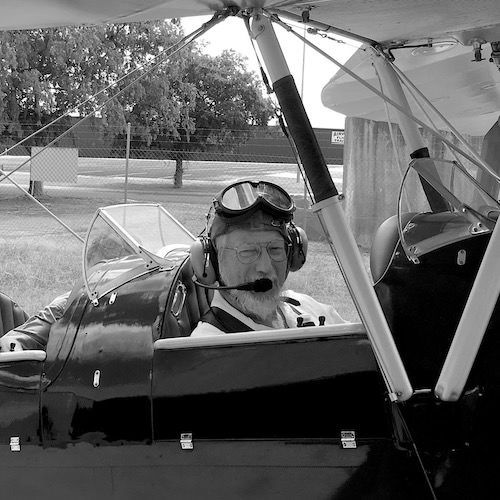
Jon Branch is the founder and senior editor of Revivaler and has written a significant number of articles for various publications including official Buying Guides for eBay, classic car articles for Hagerty, magazine articles for both the Australian Shooters Journal and the Australian Shooter, and he’s a long time contributor to Silodrome.
Jon has done radio, television, magazine and newspaper interviews on various issues, and has traveled extensively, having lived in Britain, Australia, China and Hong Kong. His travels have taken him to Indonesia, Israel, Italy, Japan and a number of other countries. He has studied the Japanese sword arts and has a long history of involvement in the shooting sports, which has included authoring submissions to government on various firearms related issues and assisting in the design and establishment of shooting ranges.

